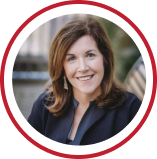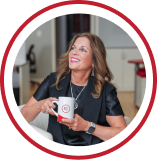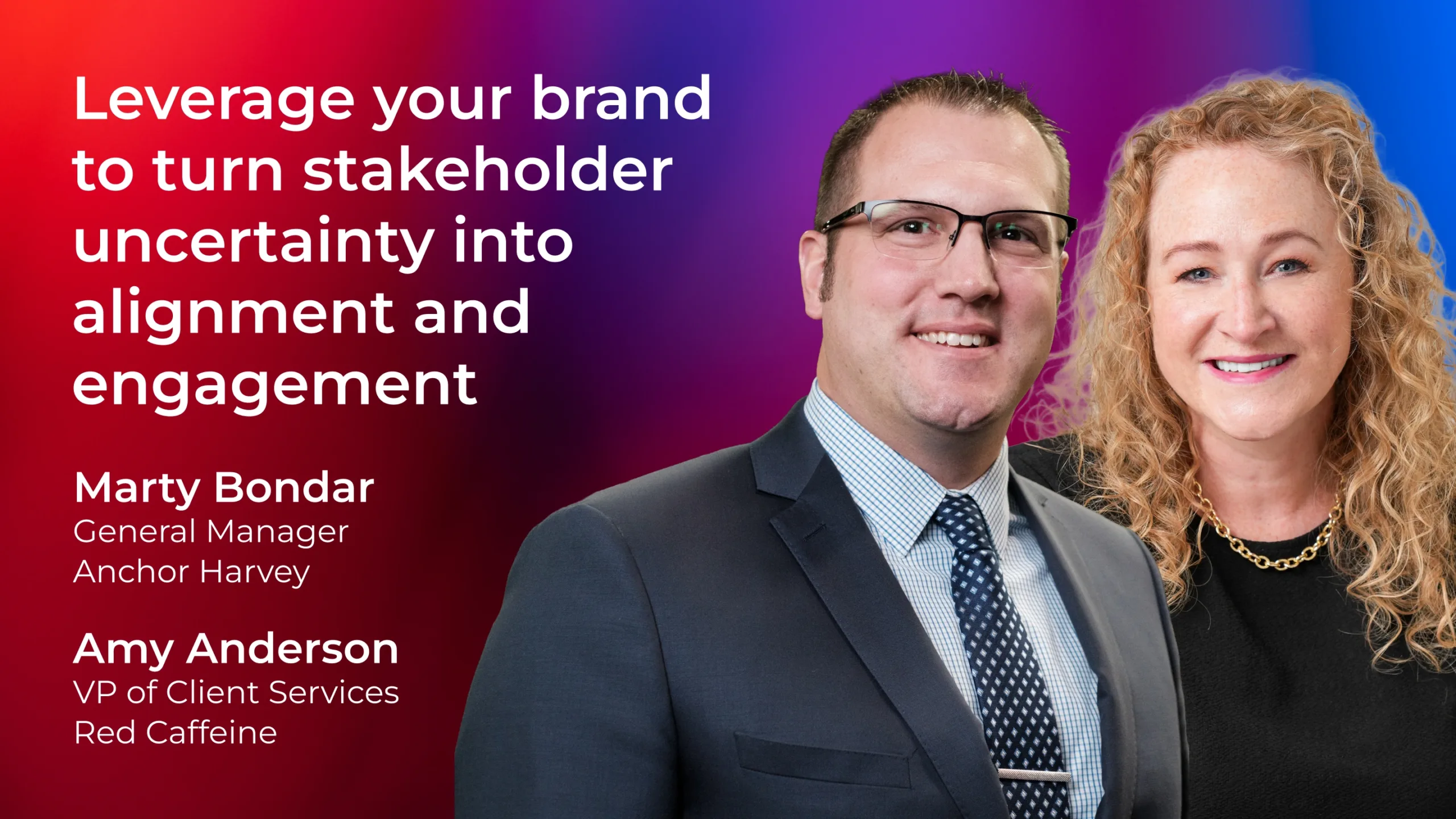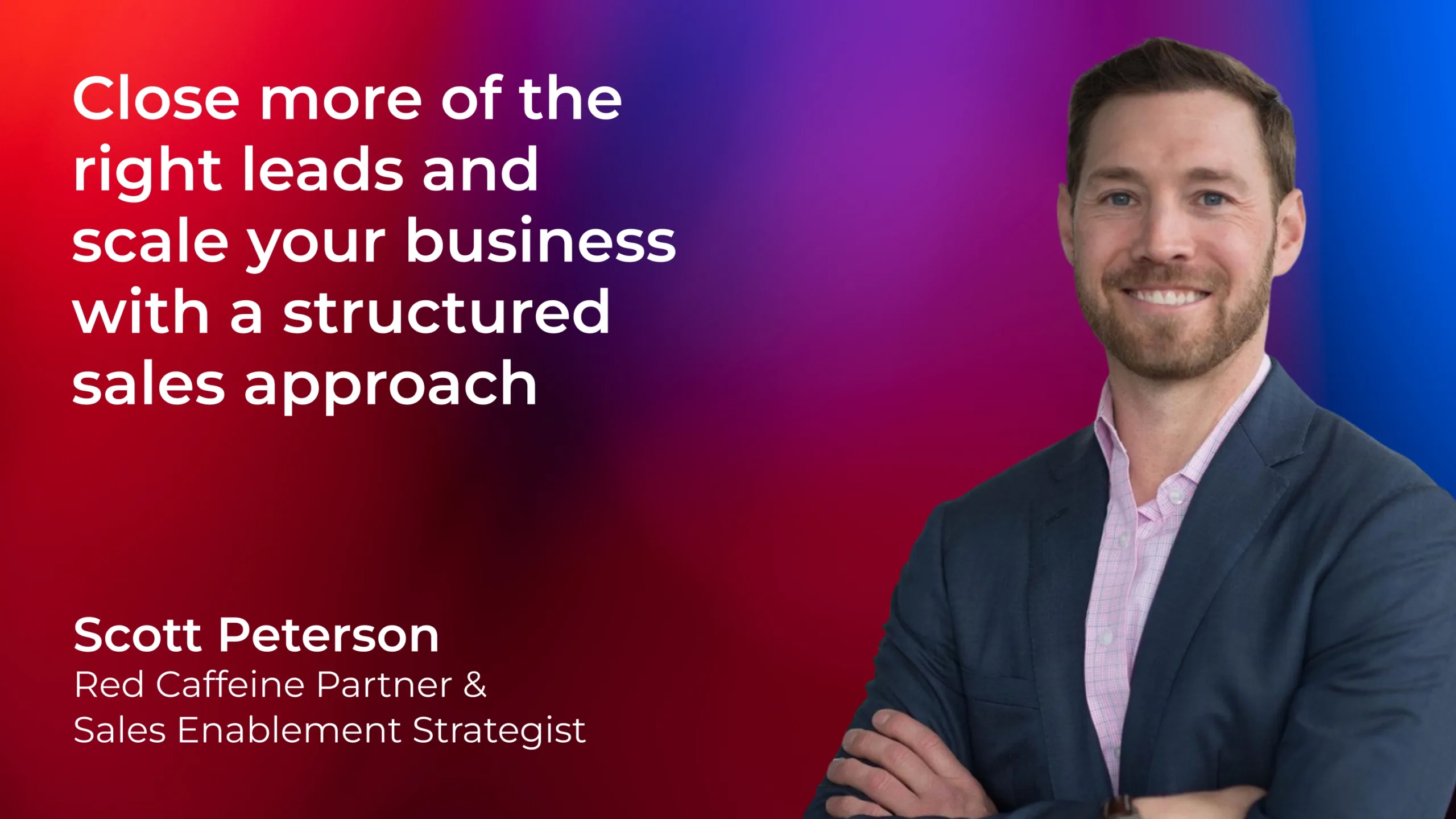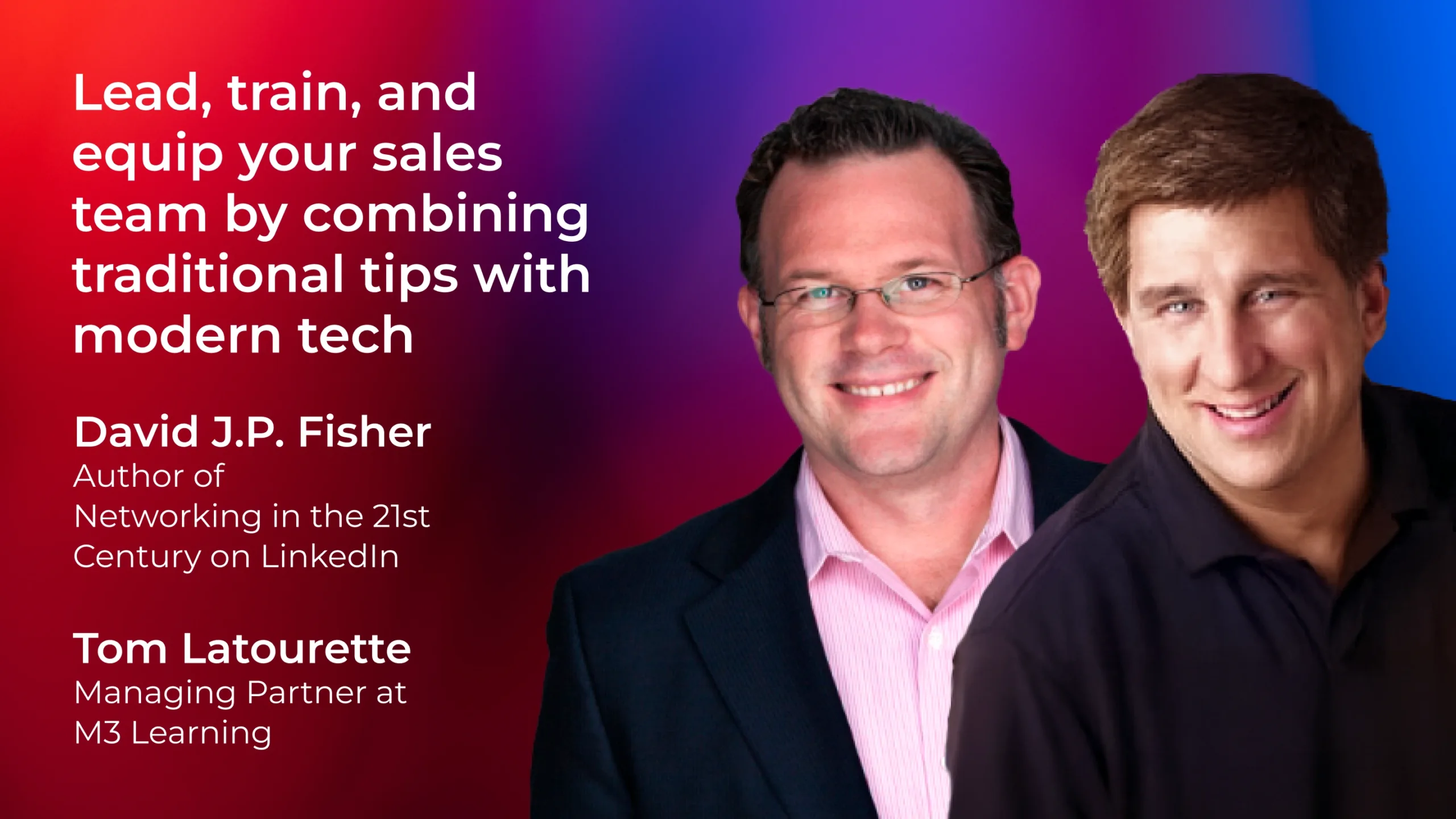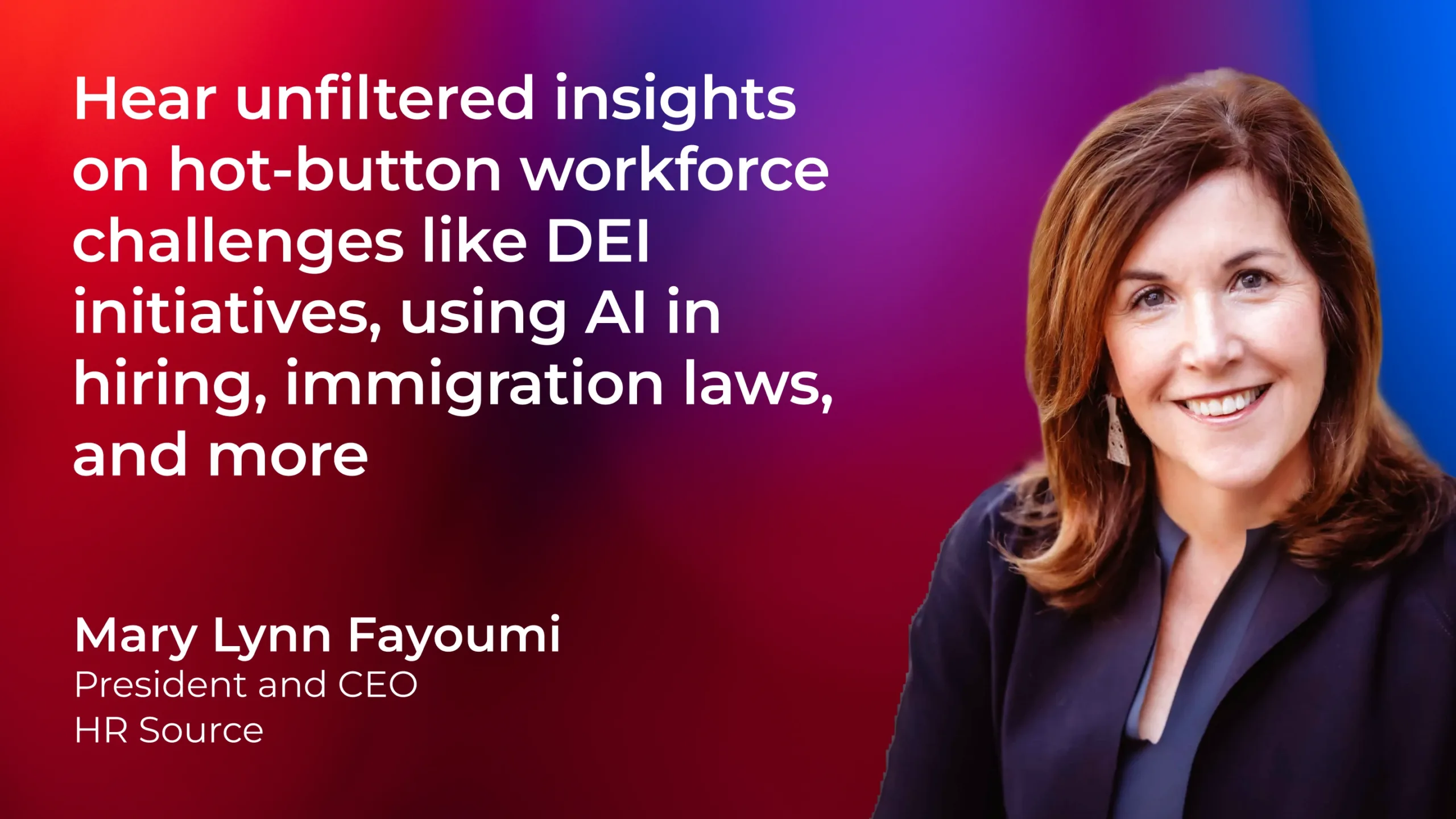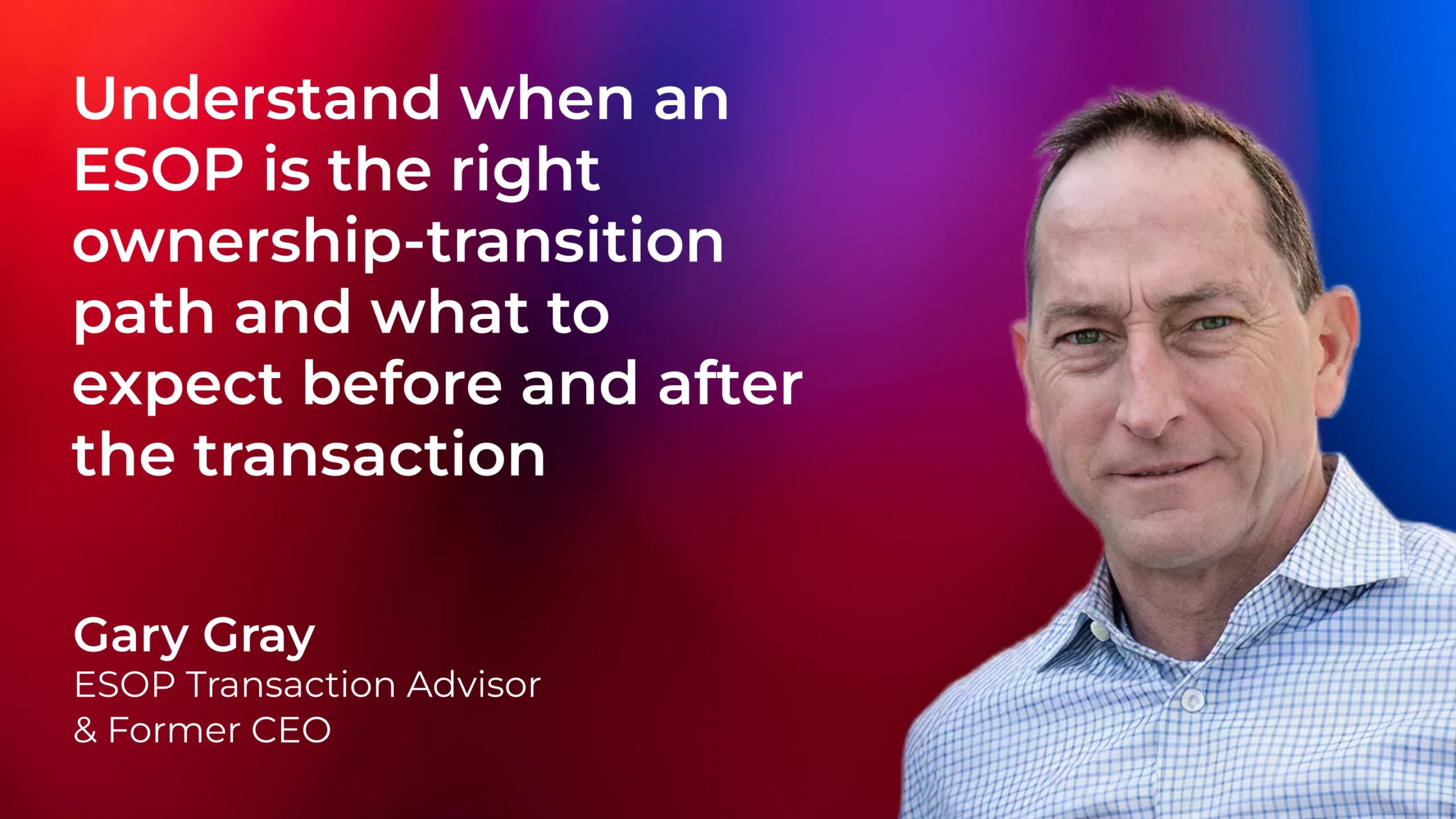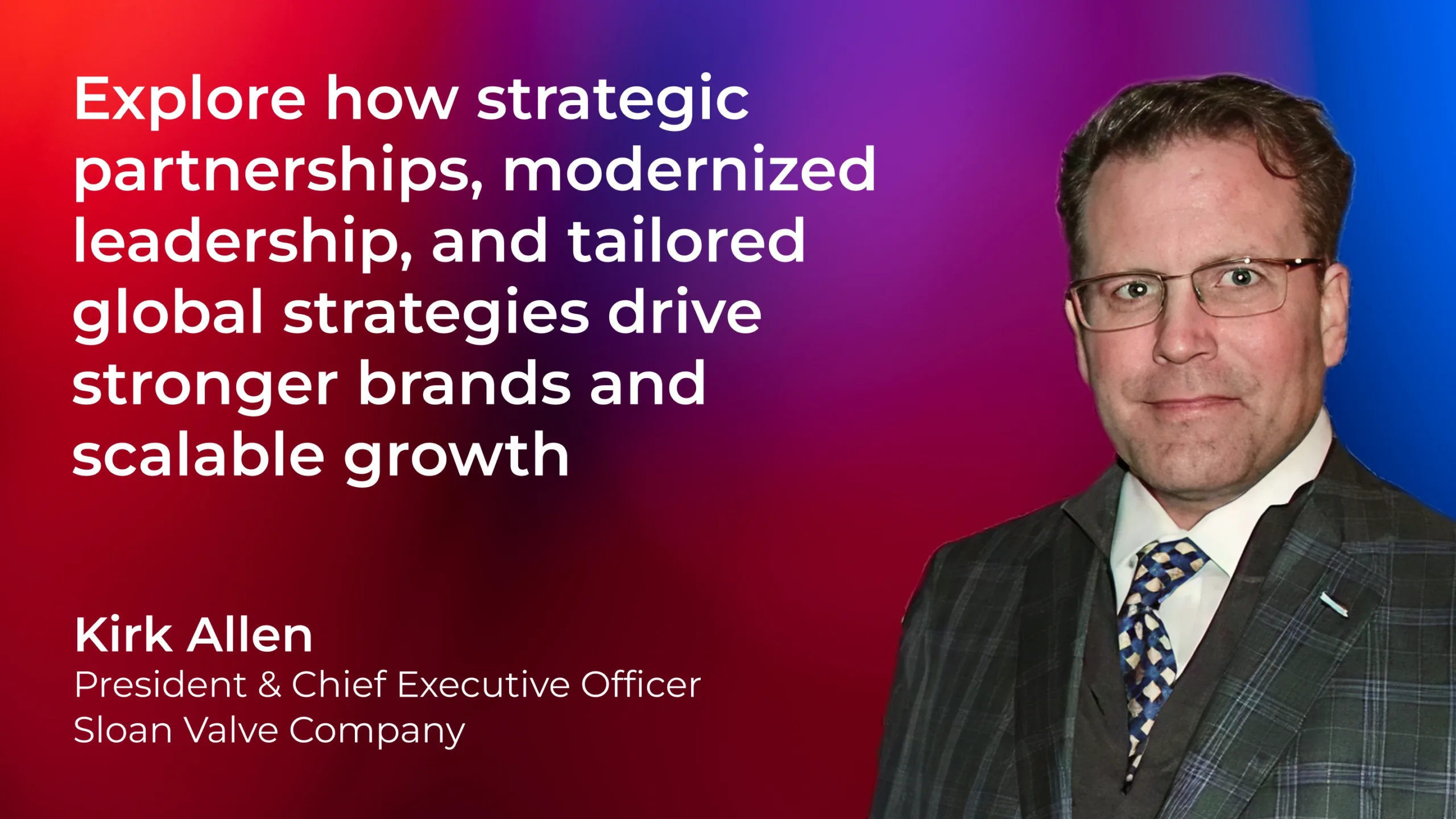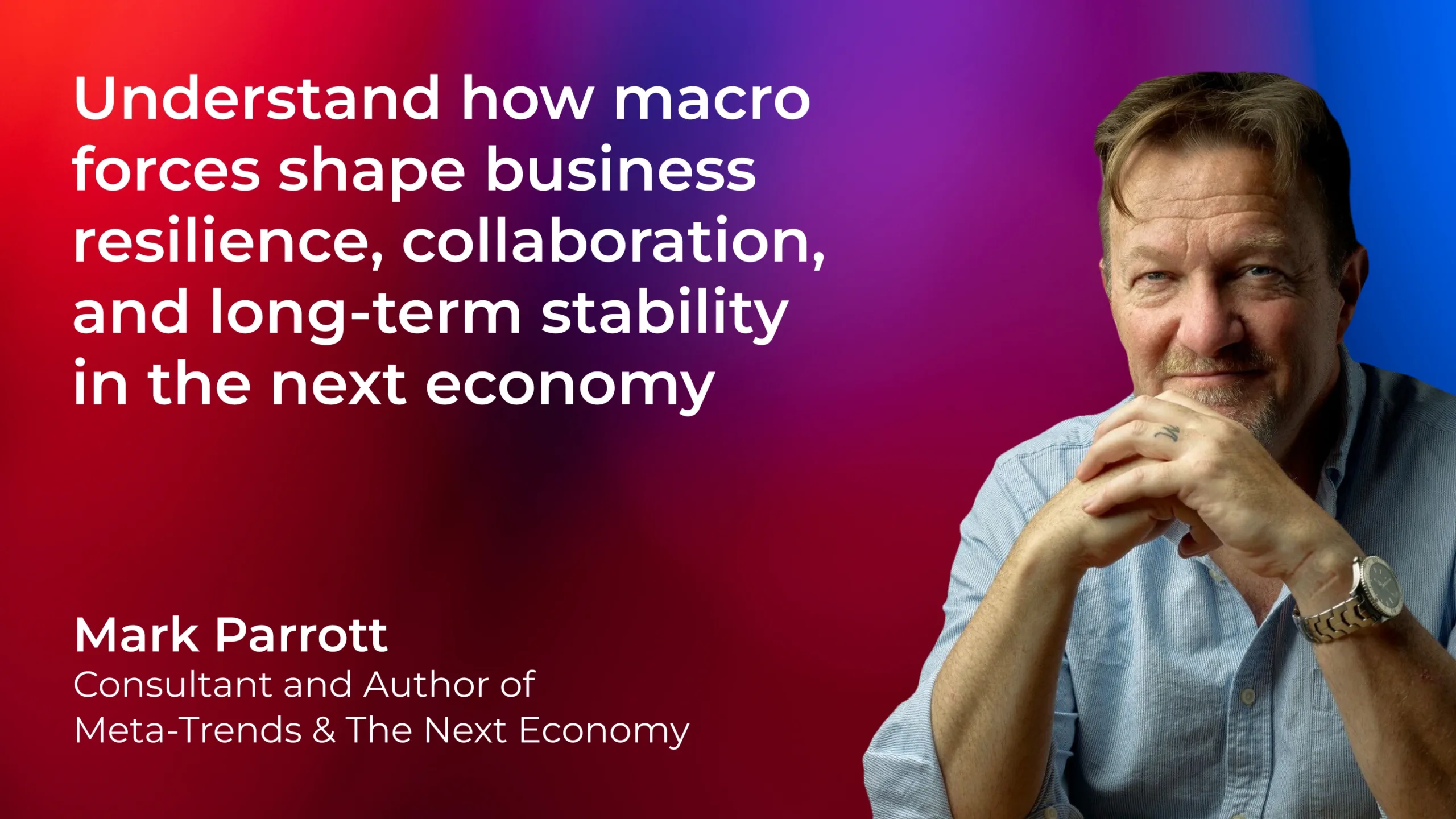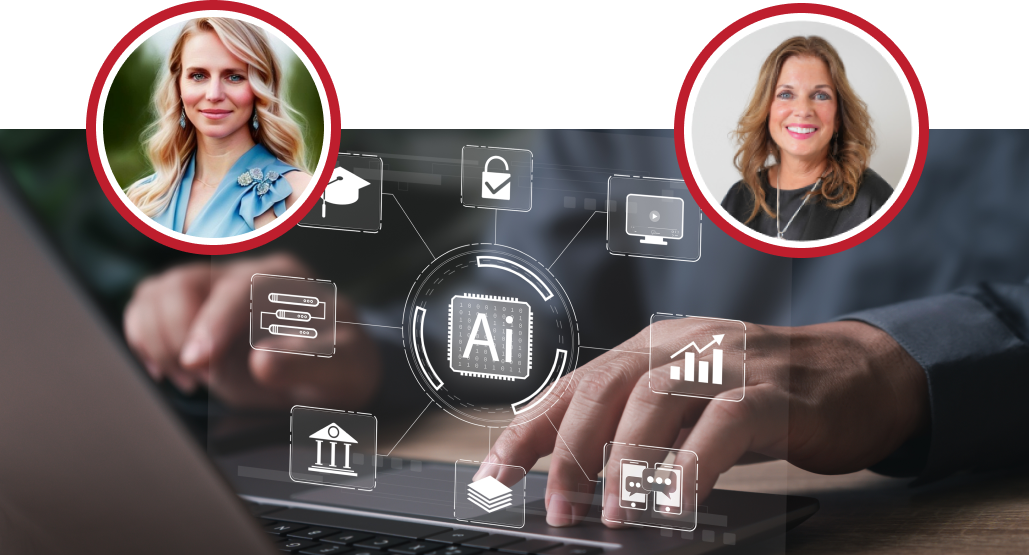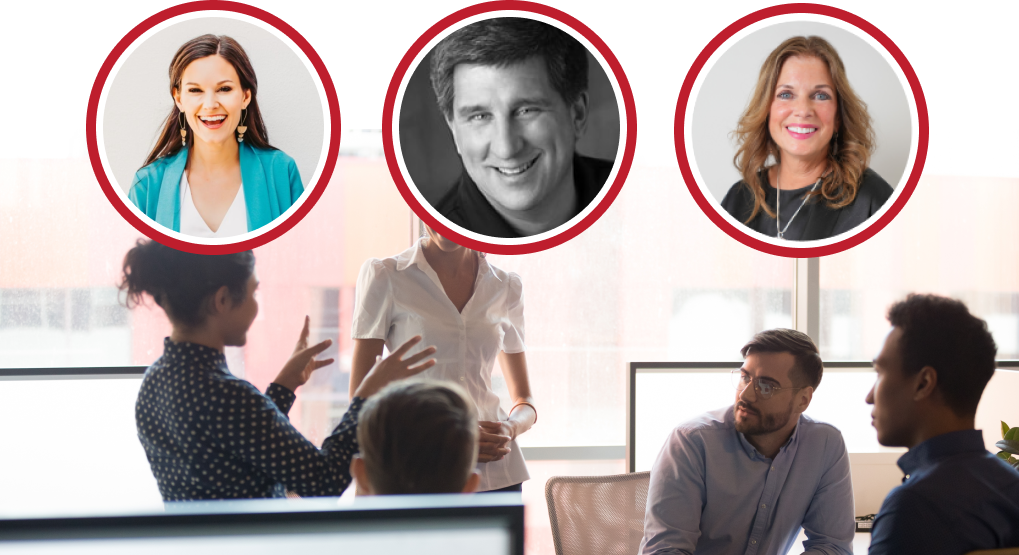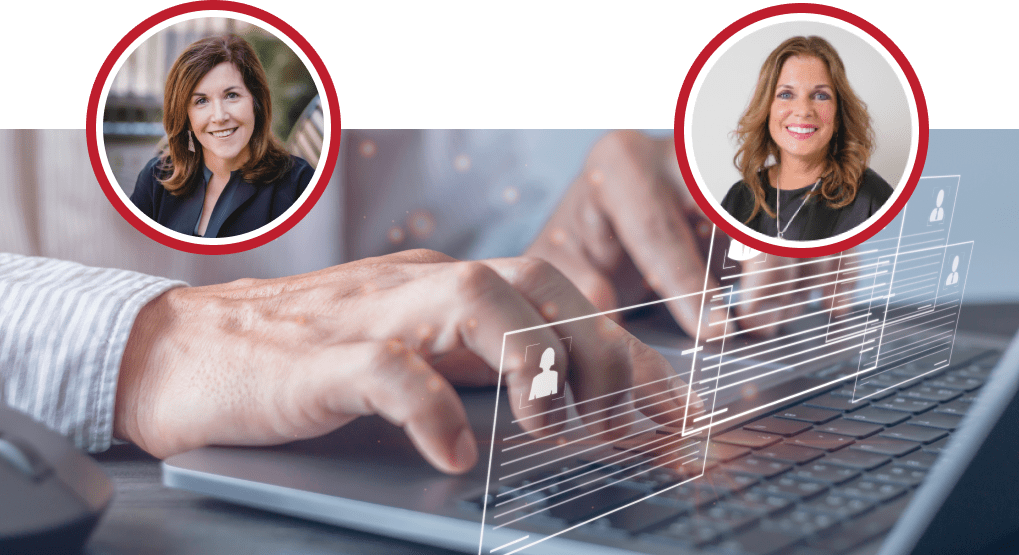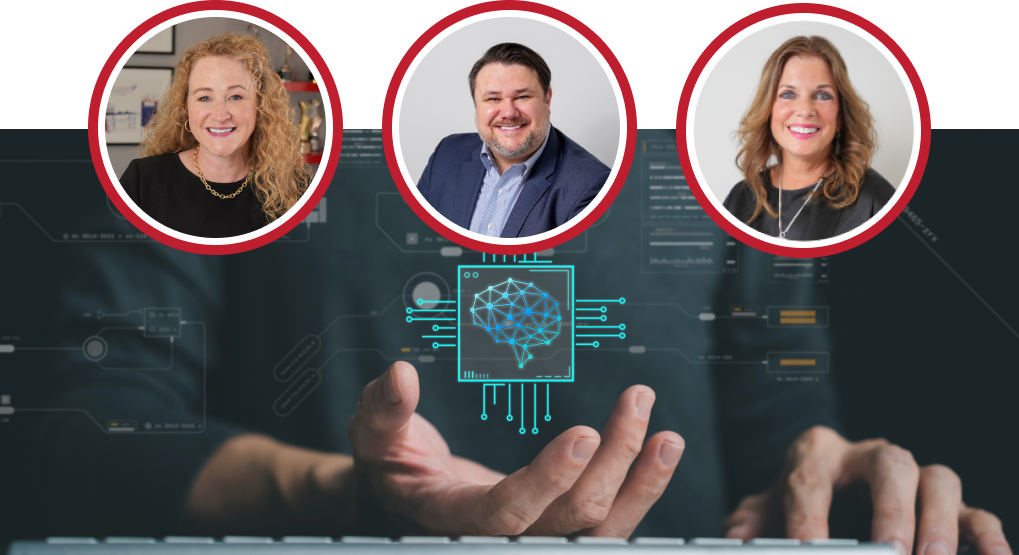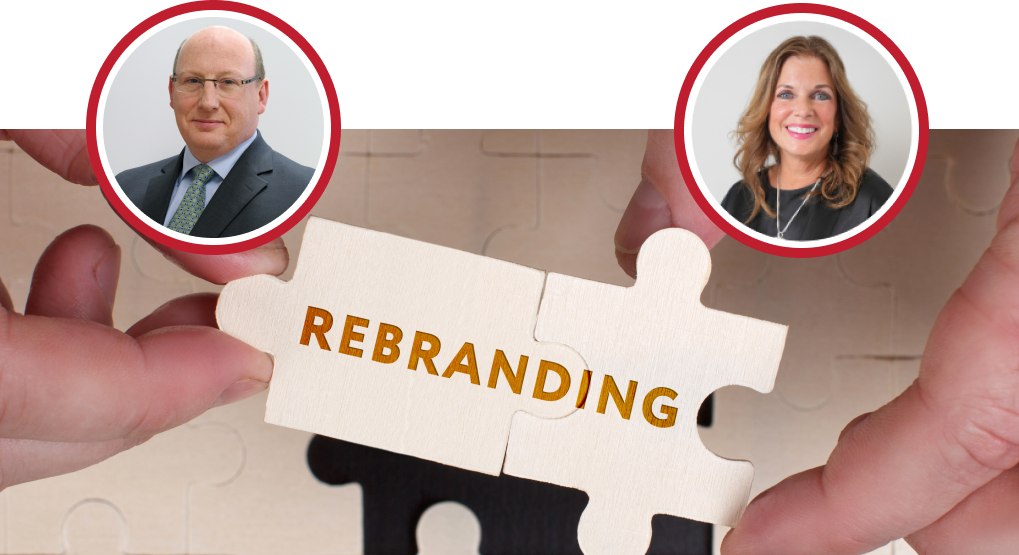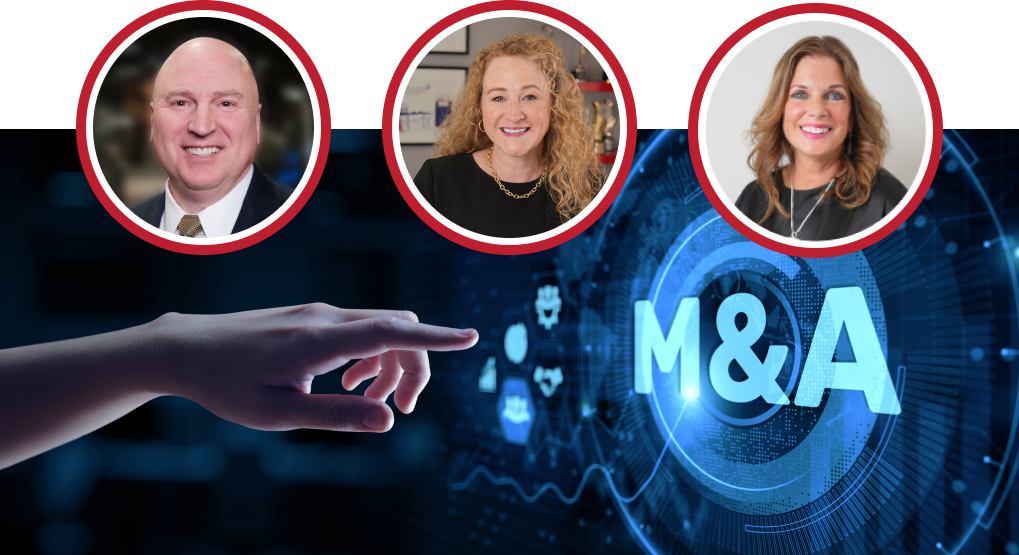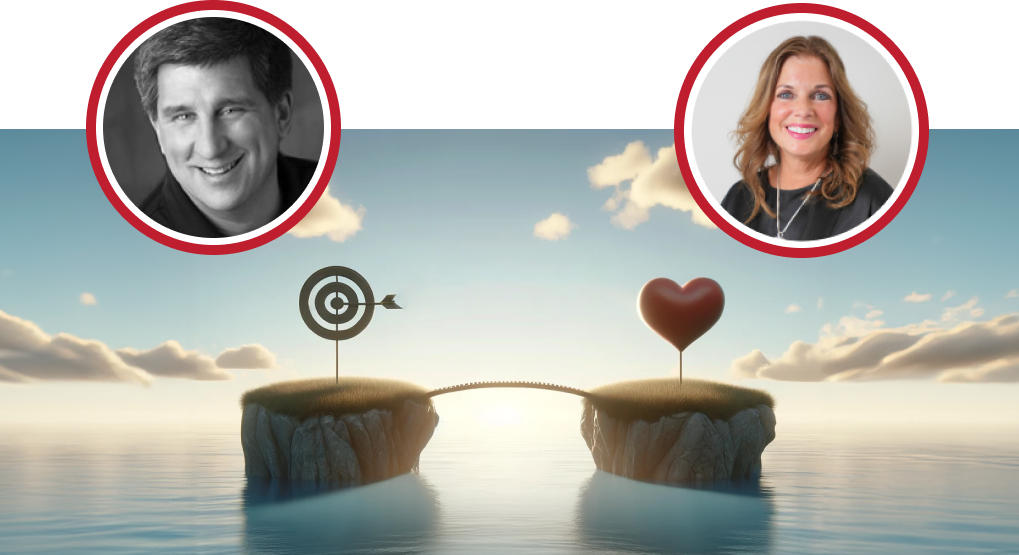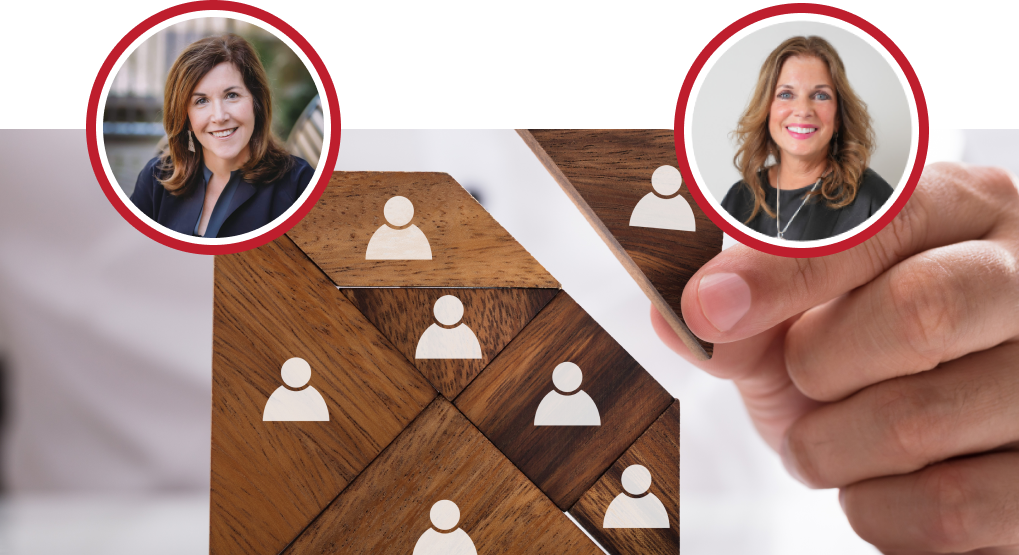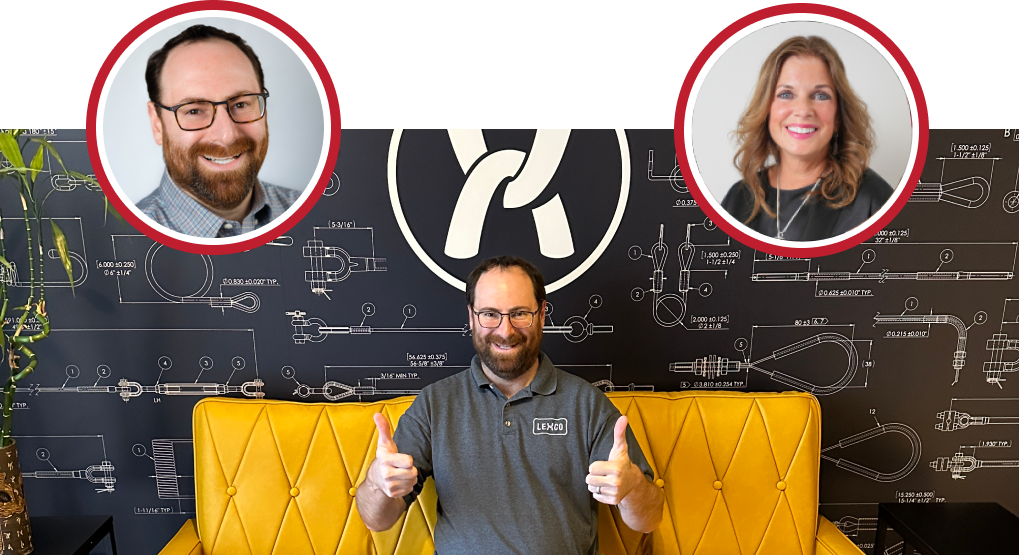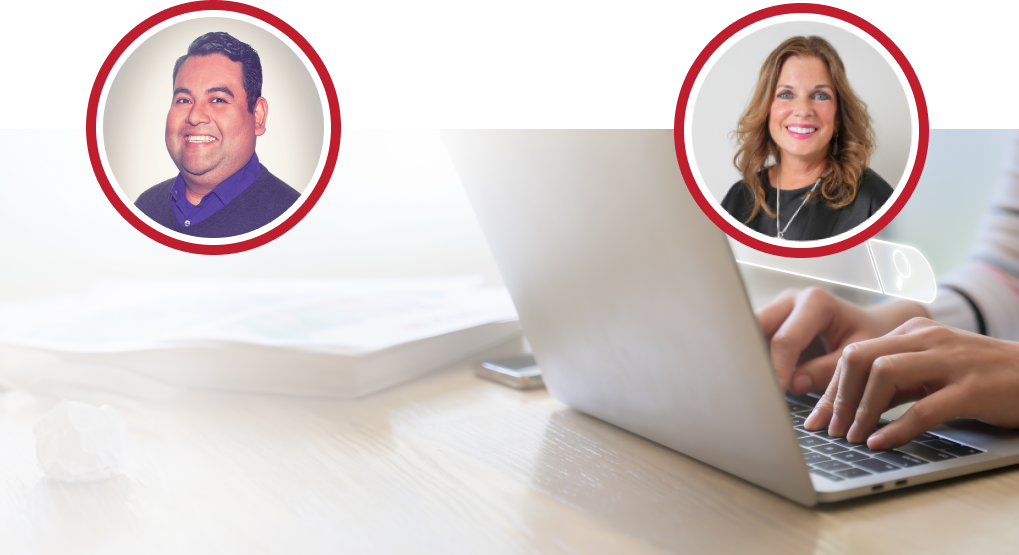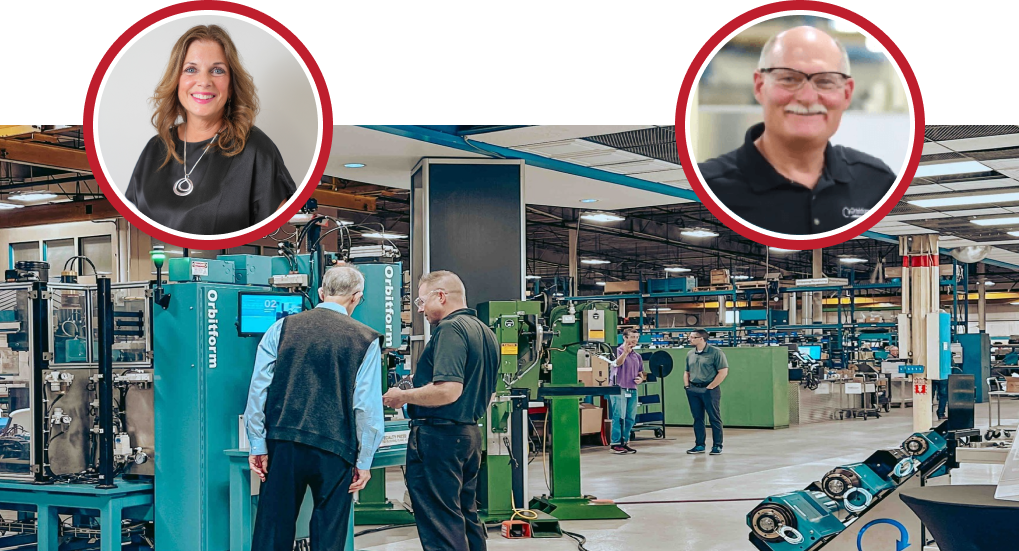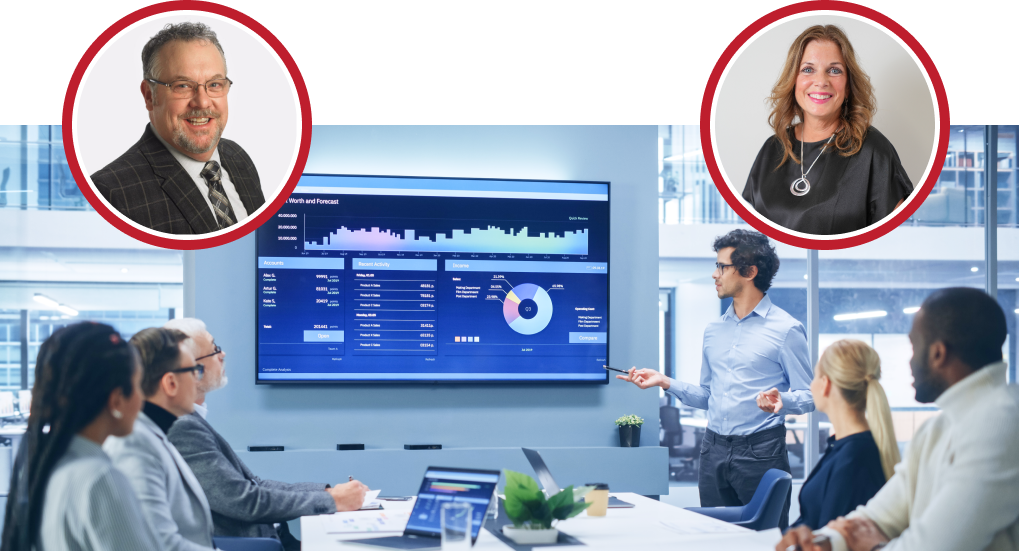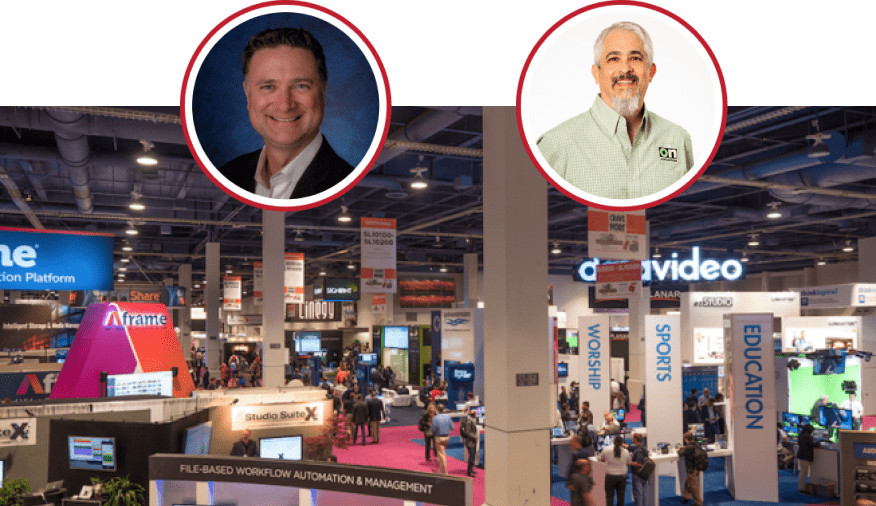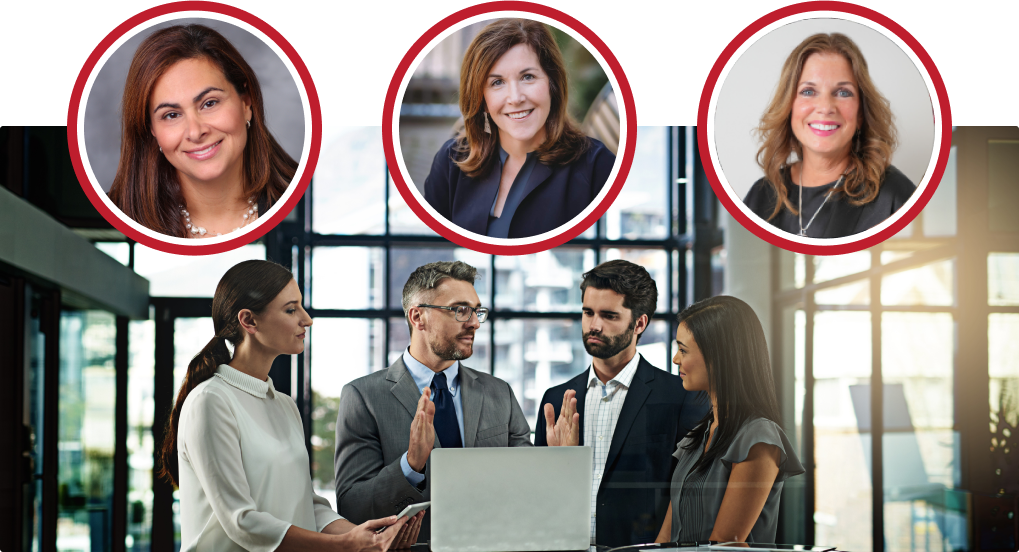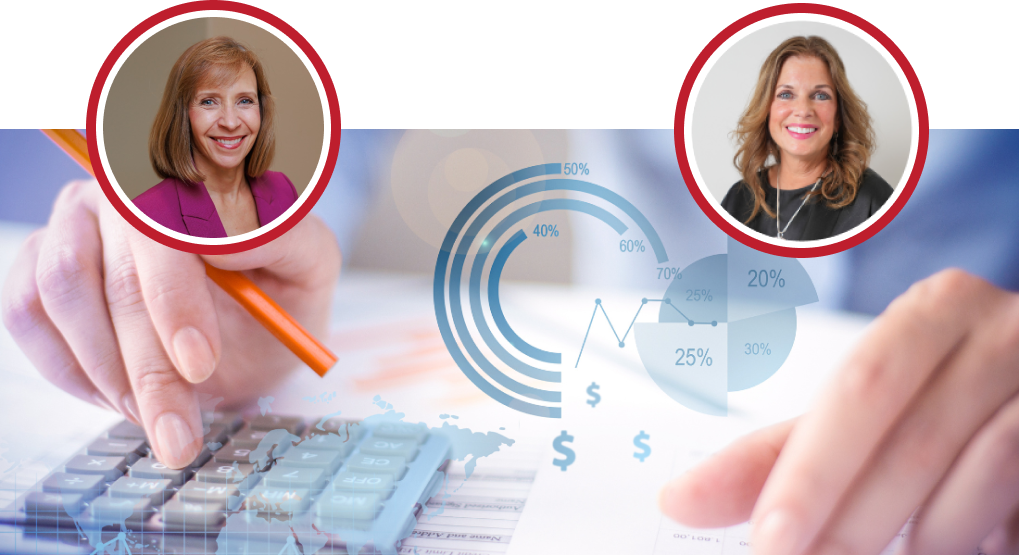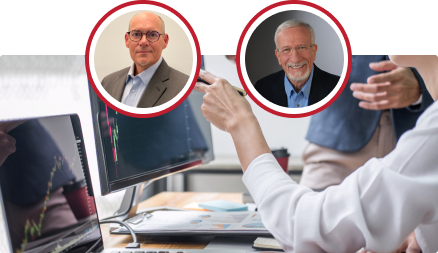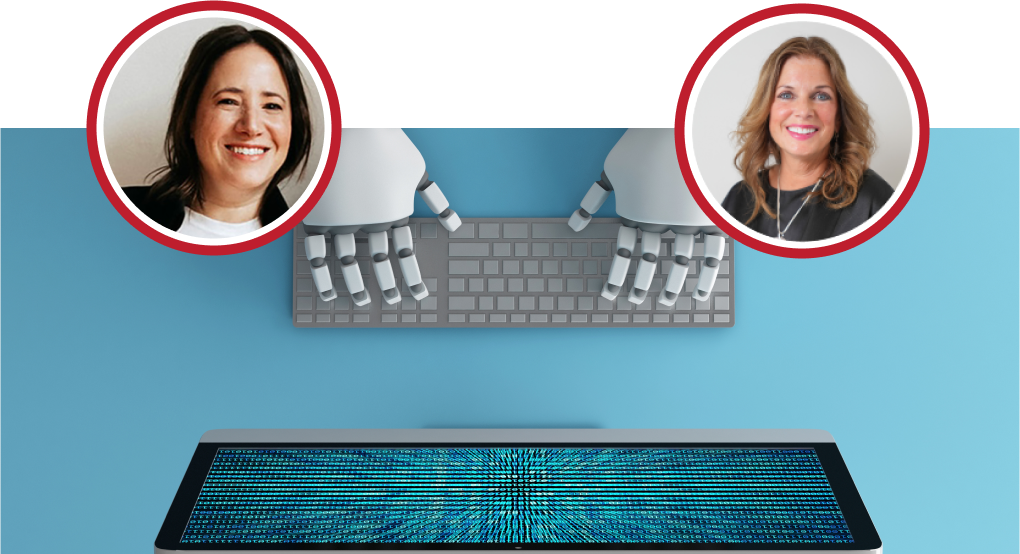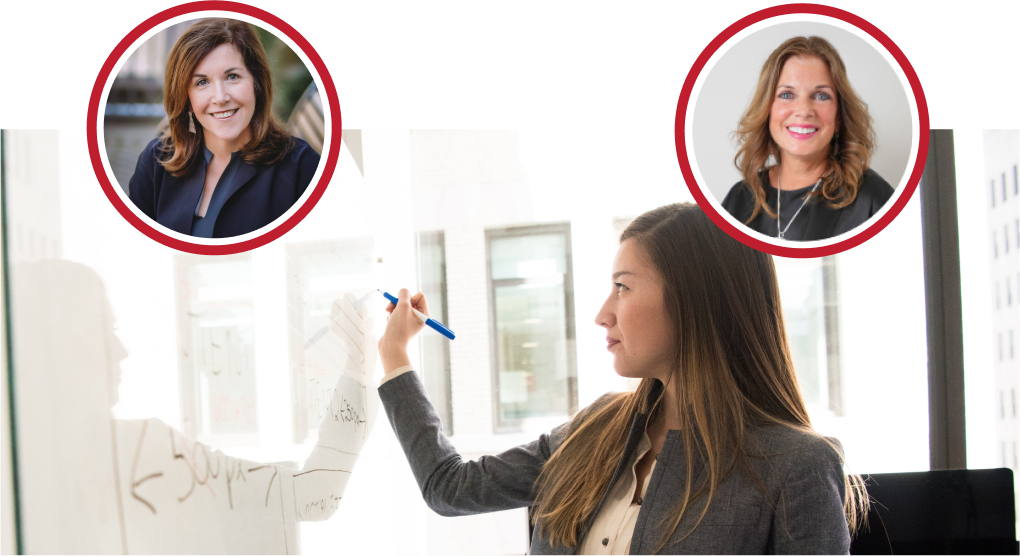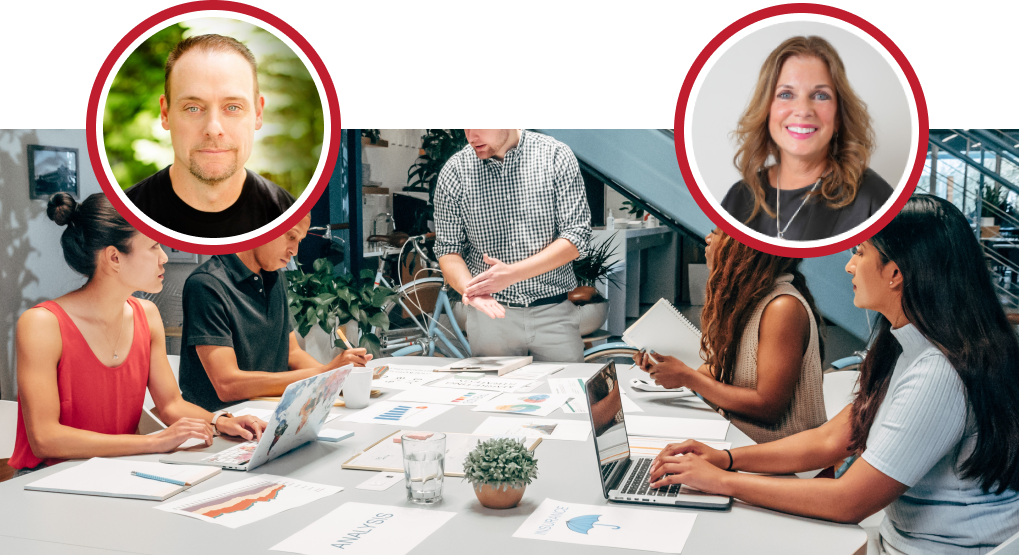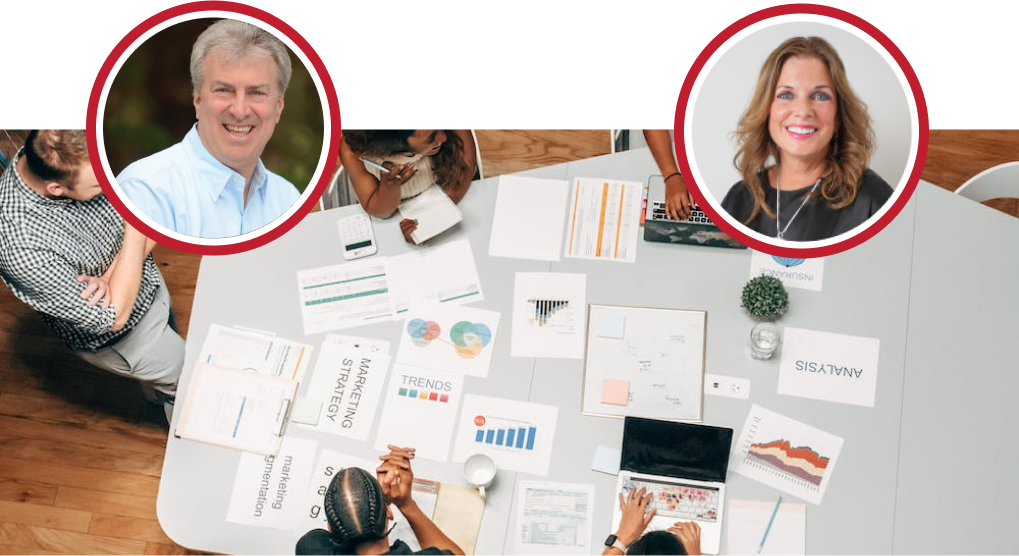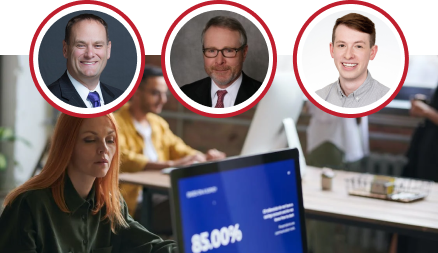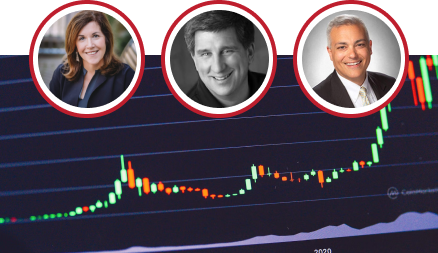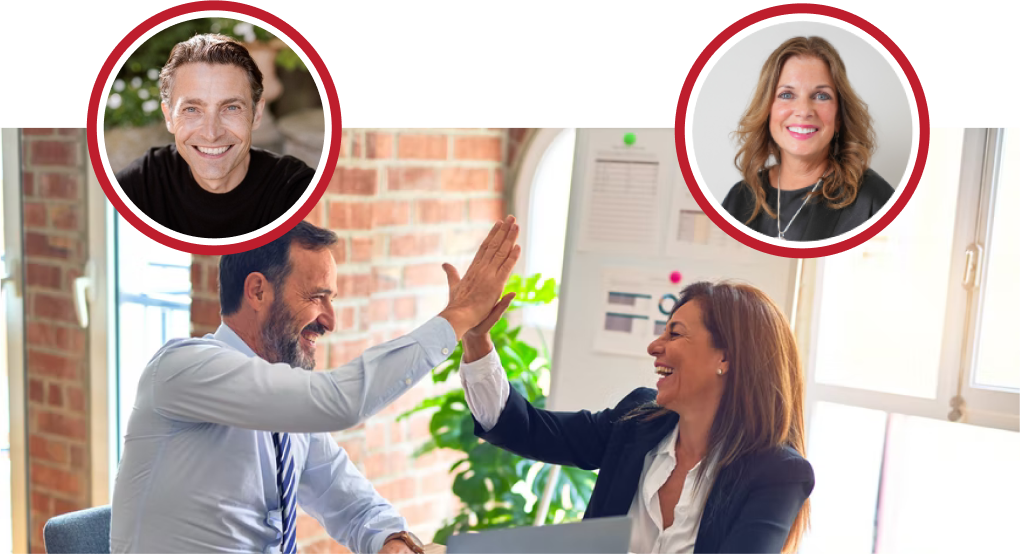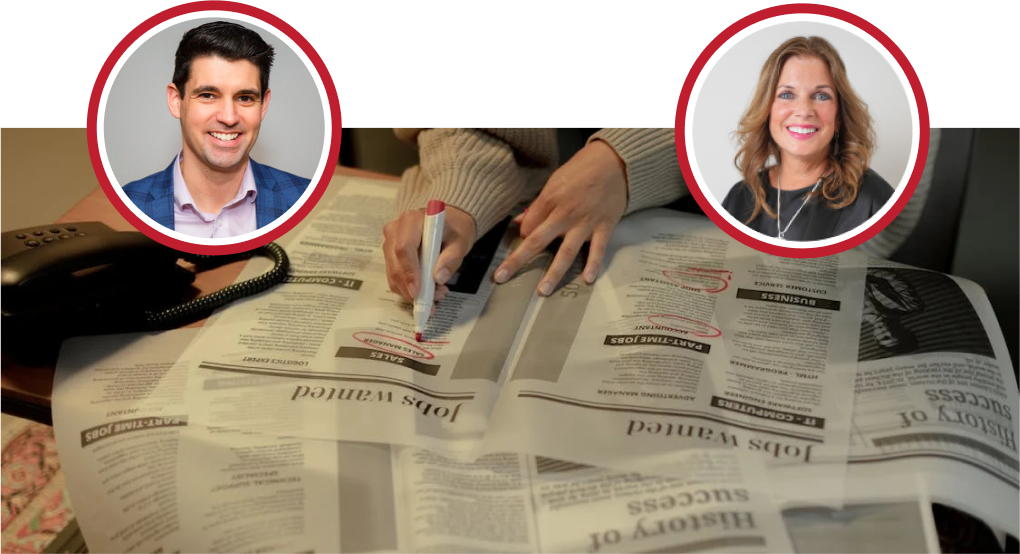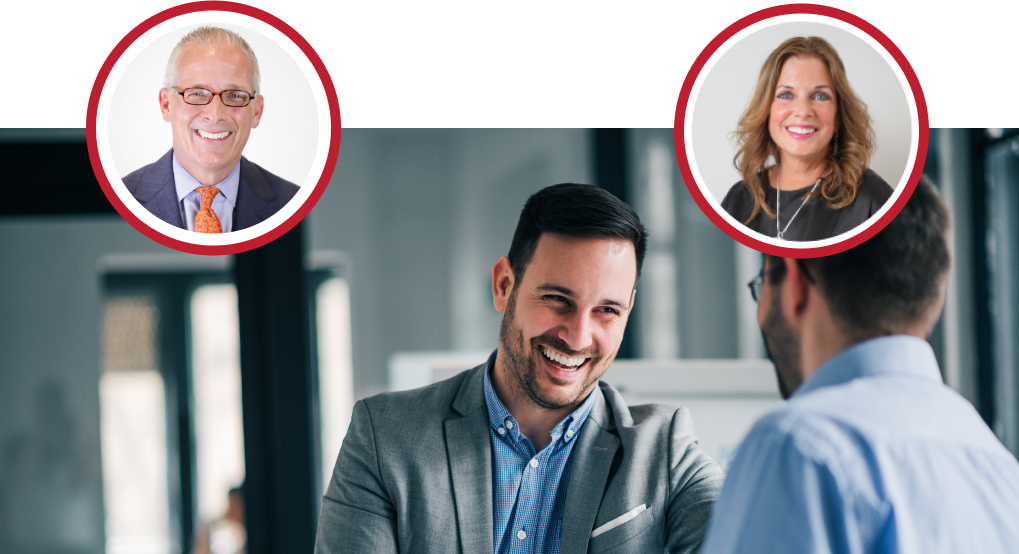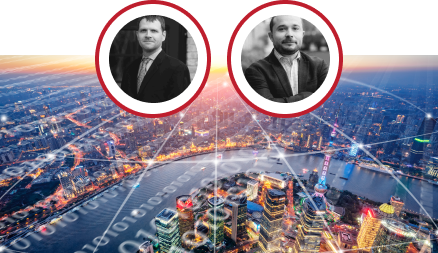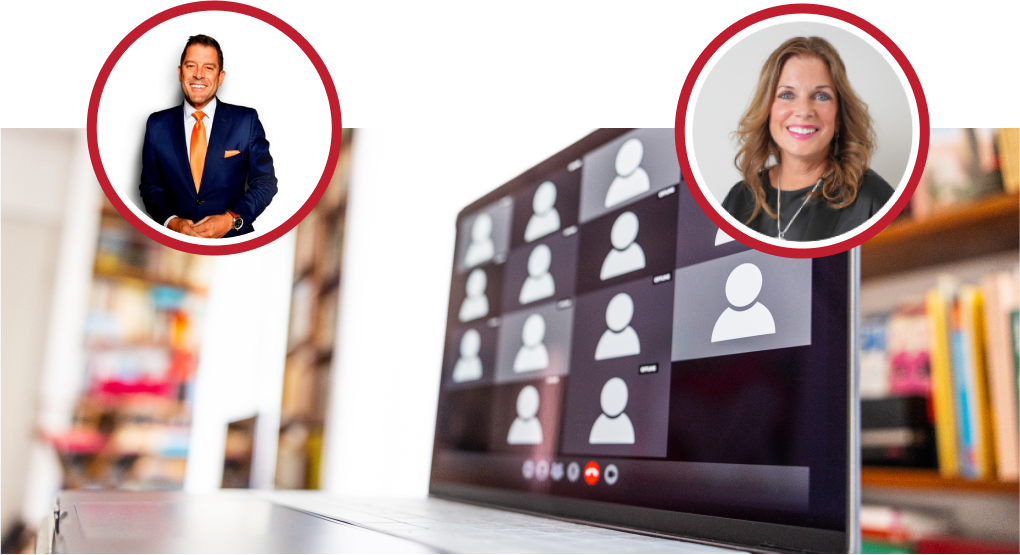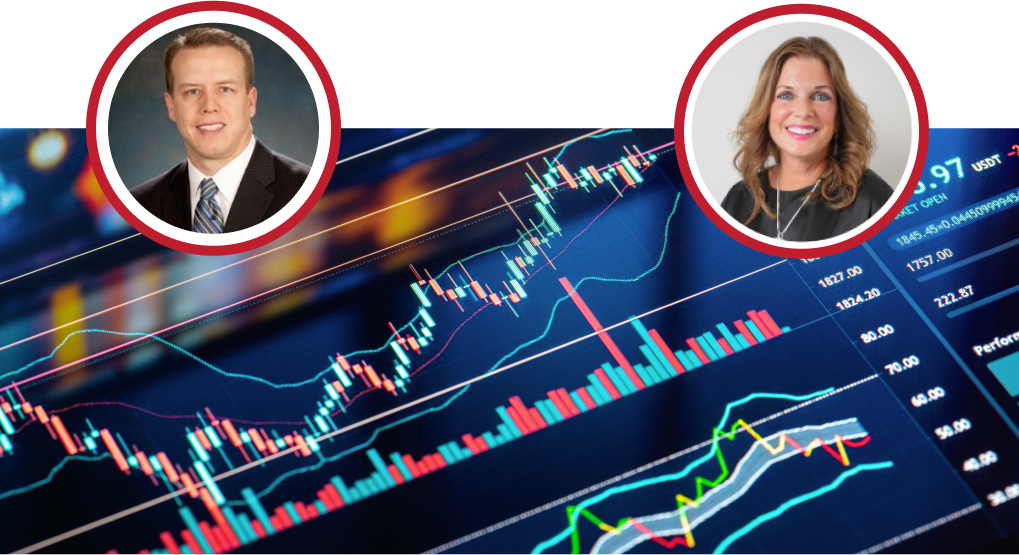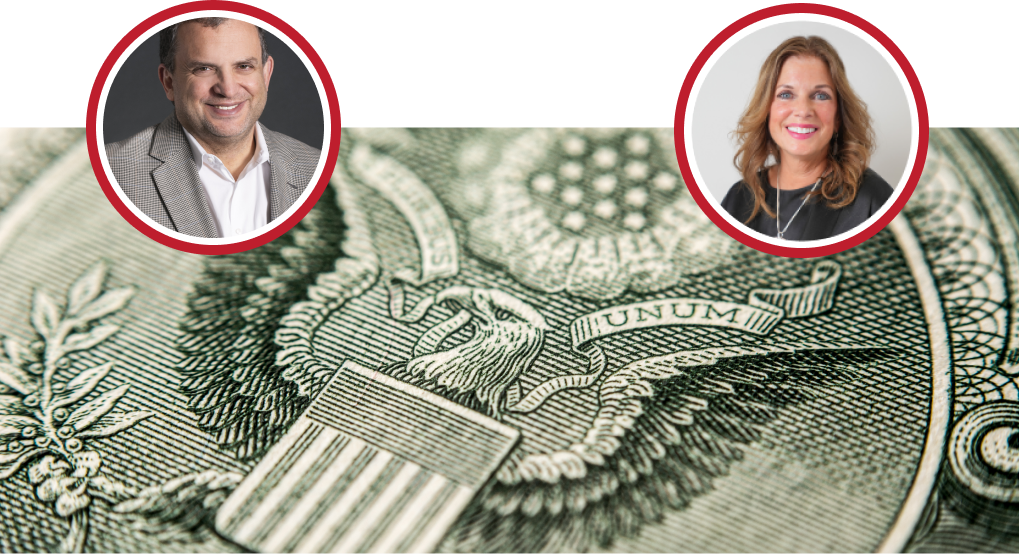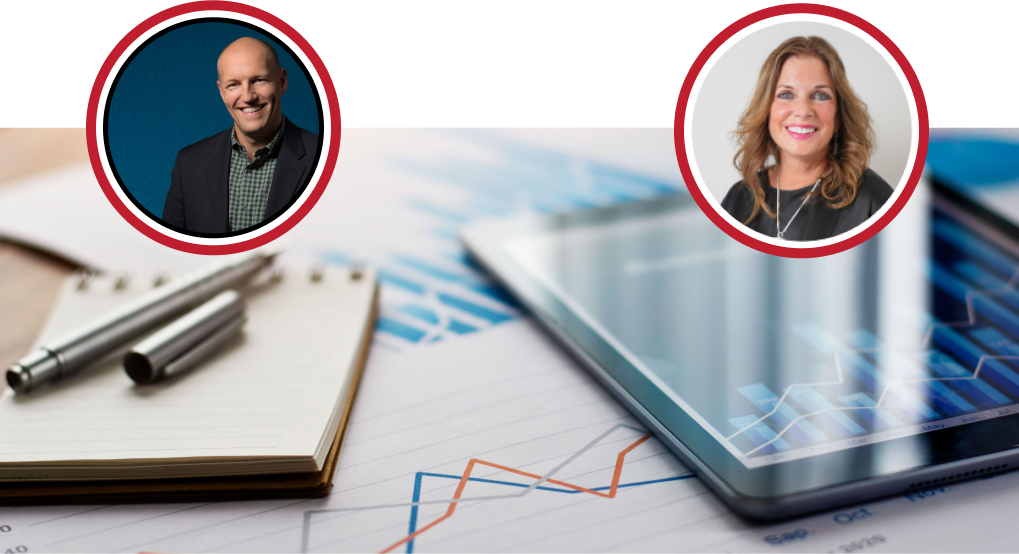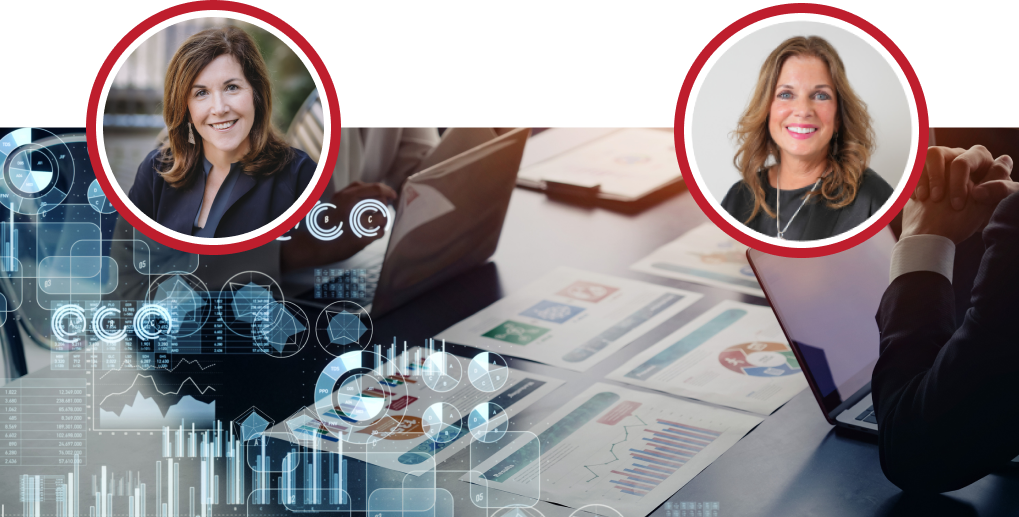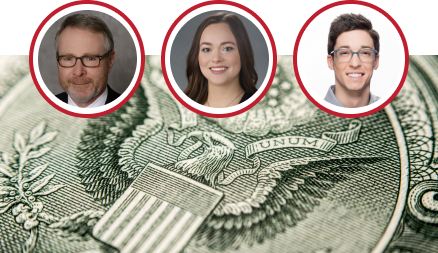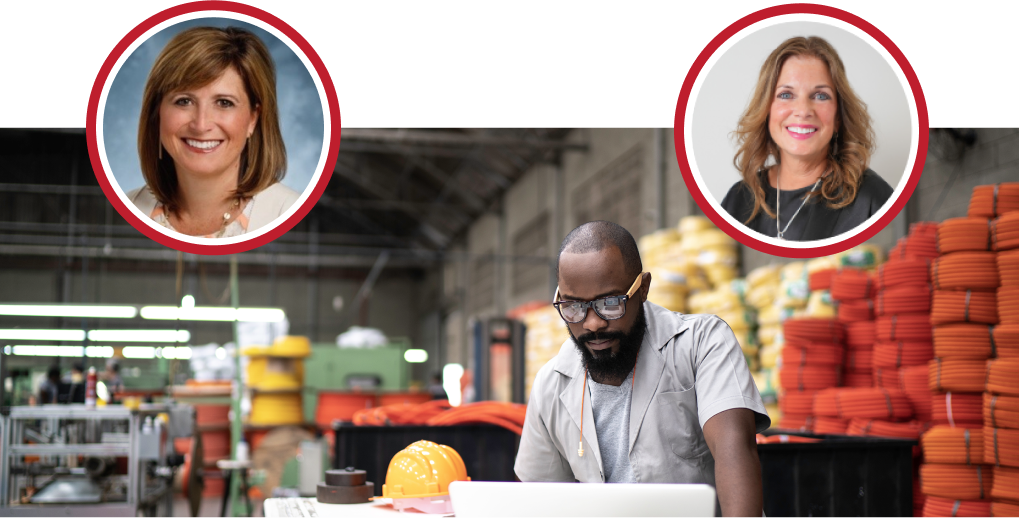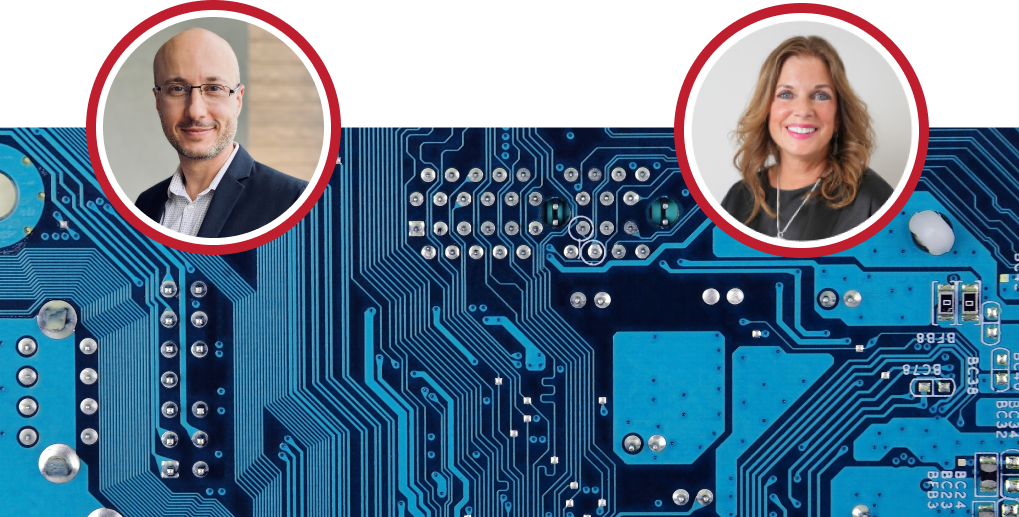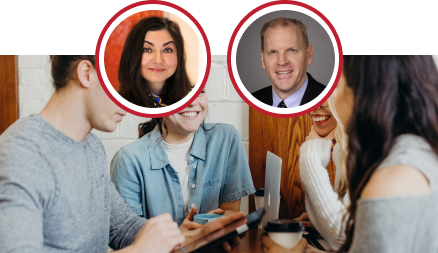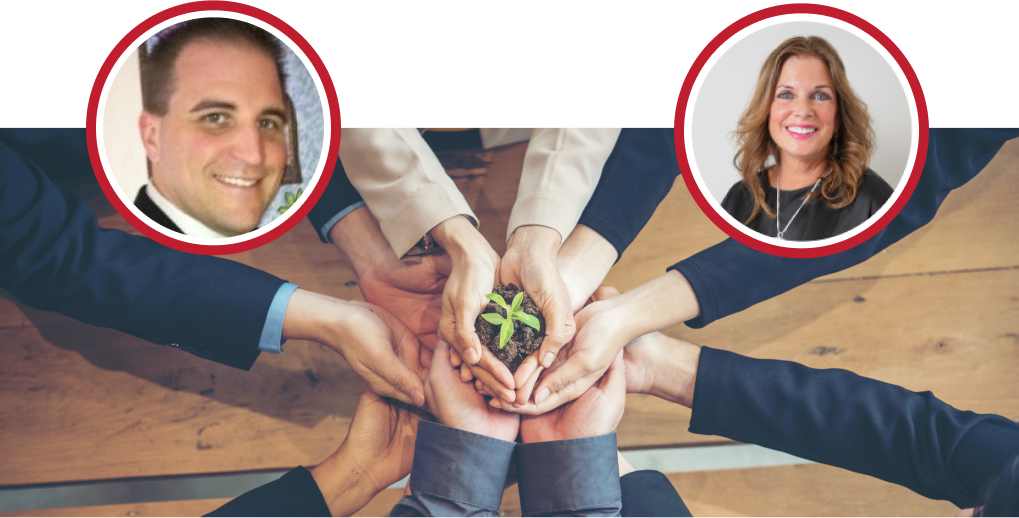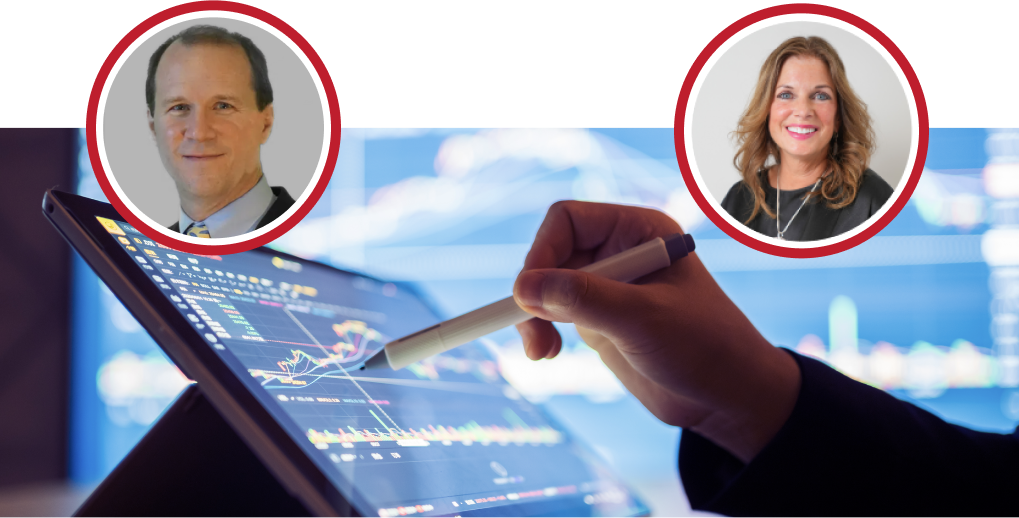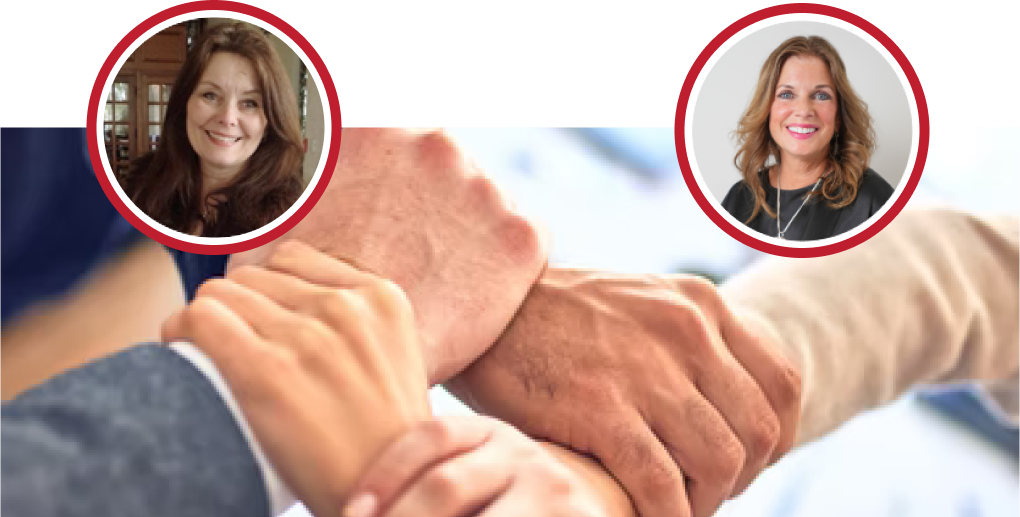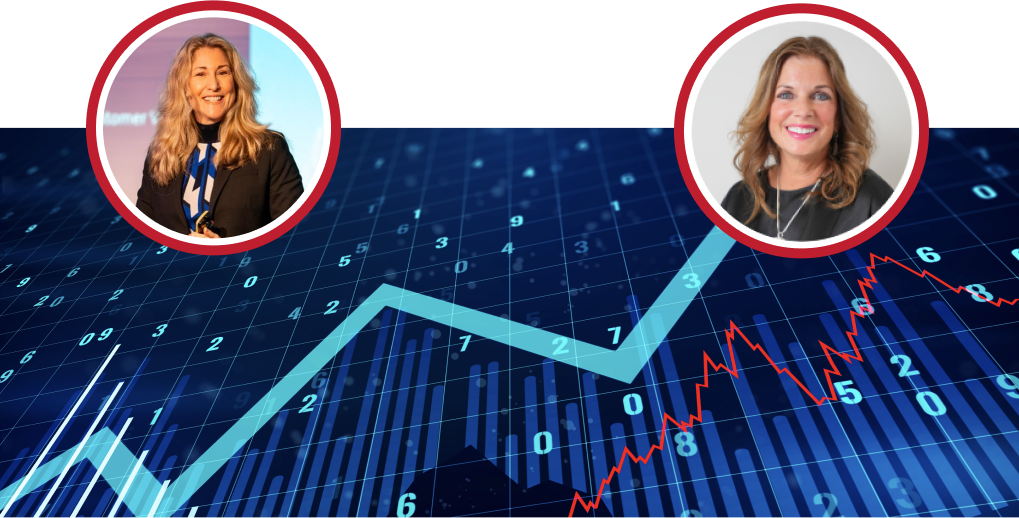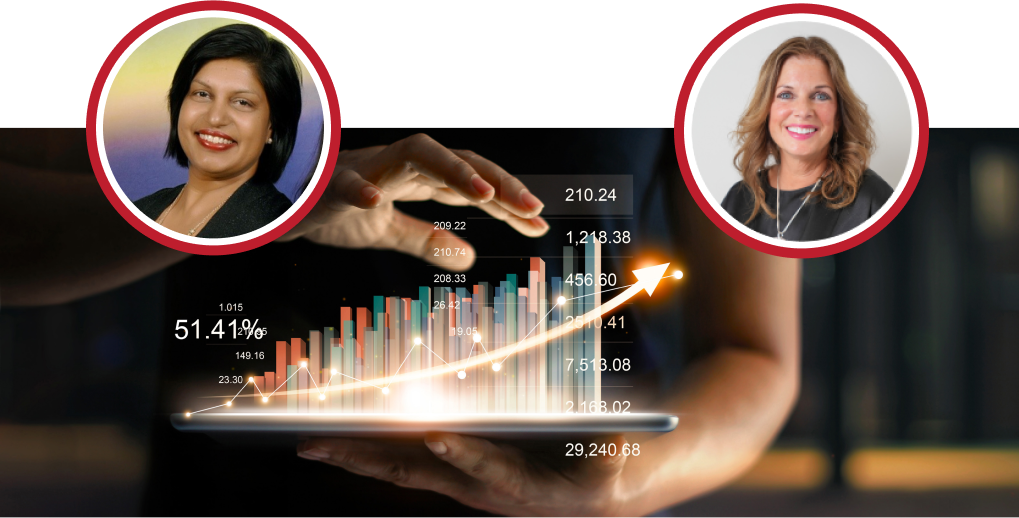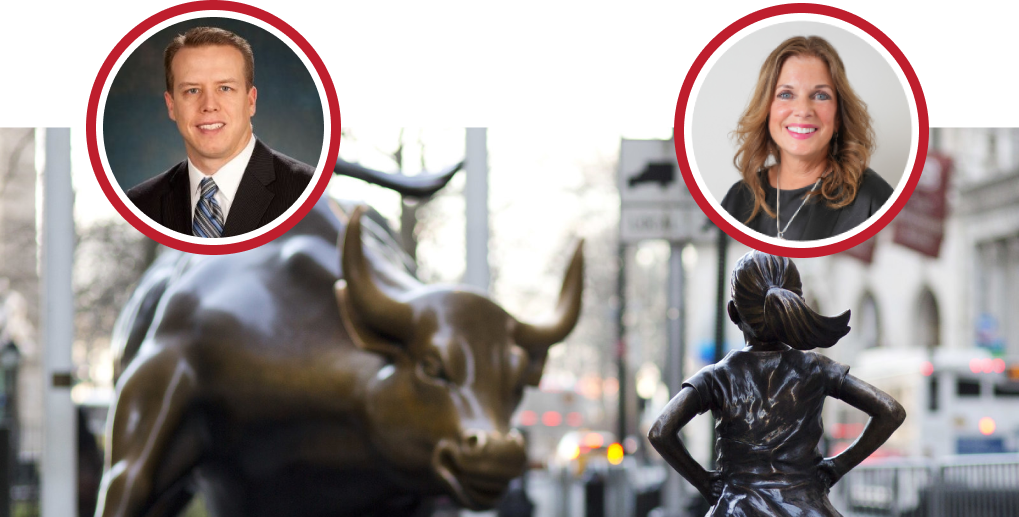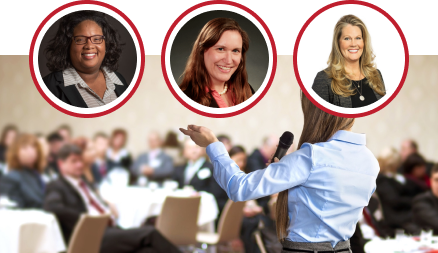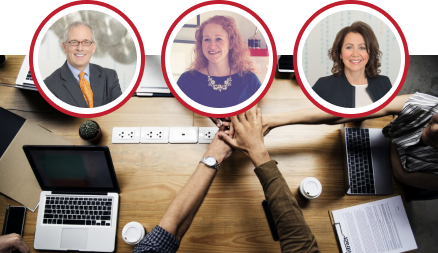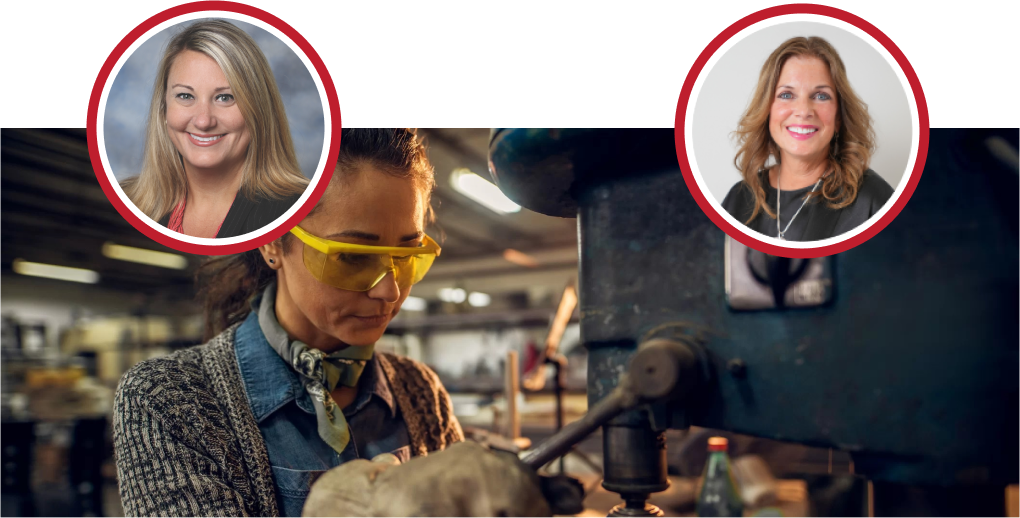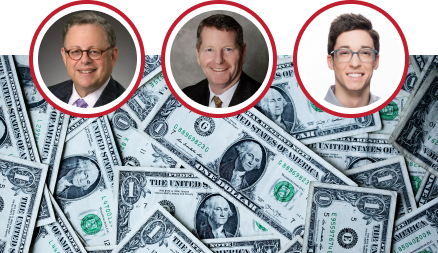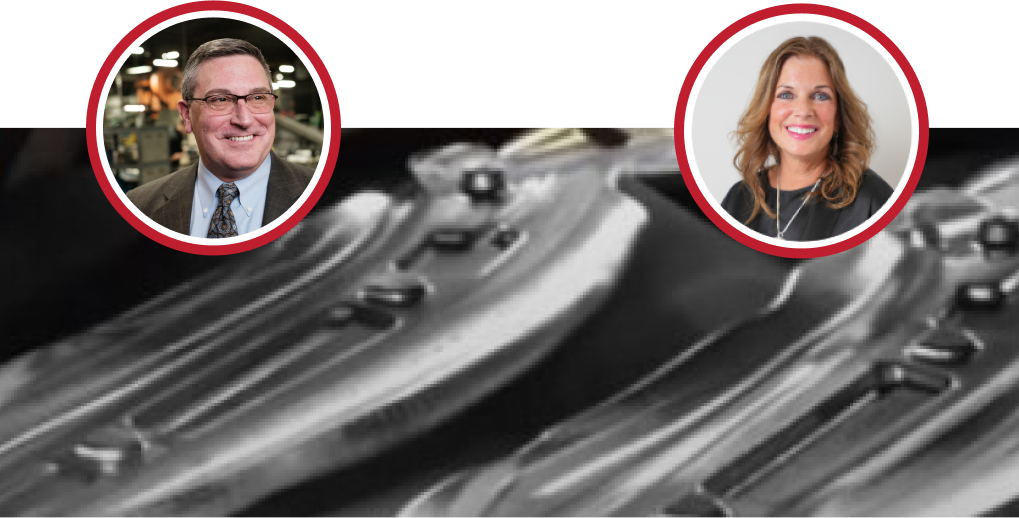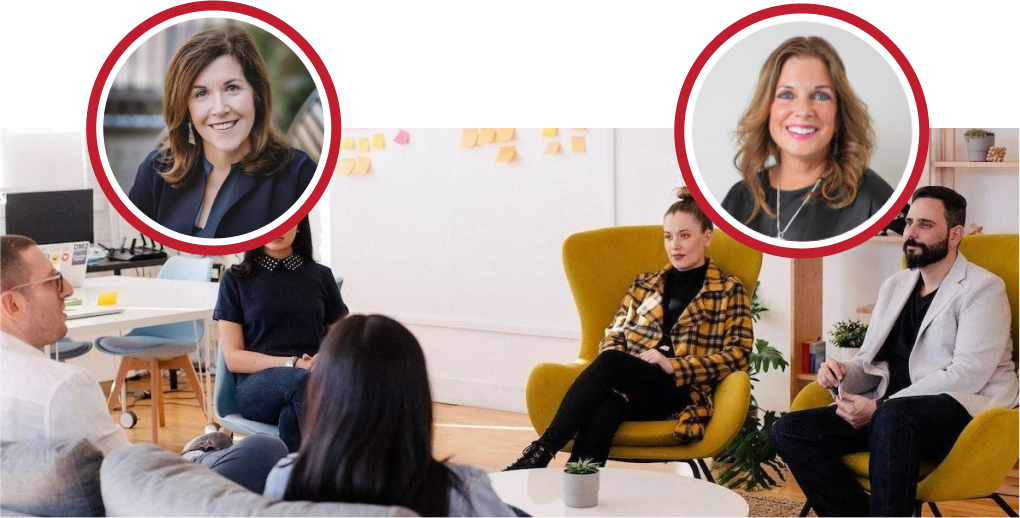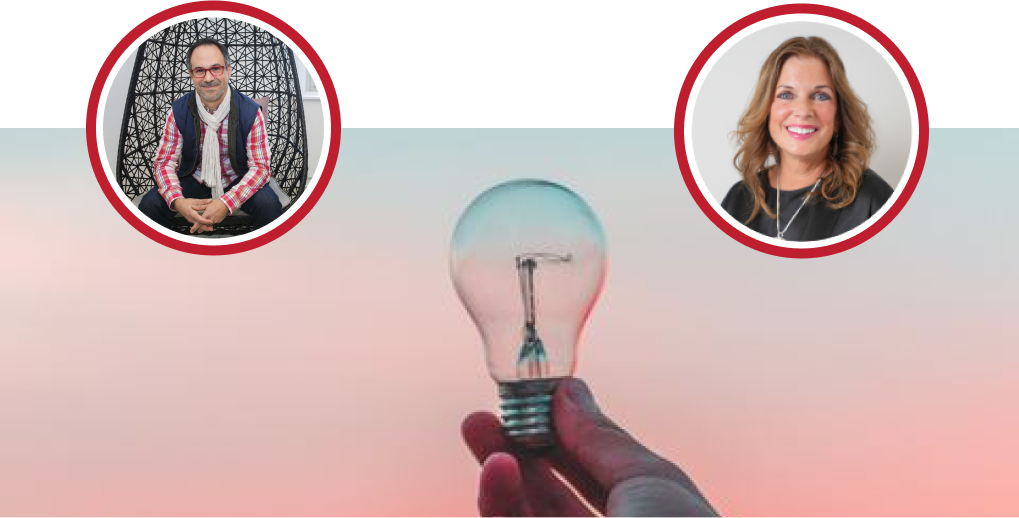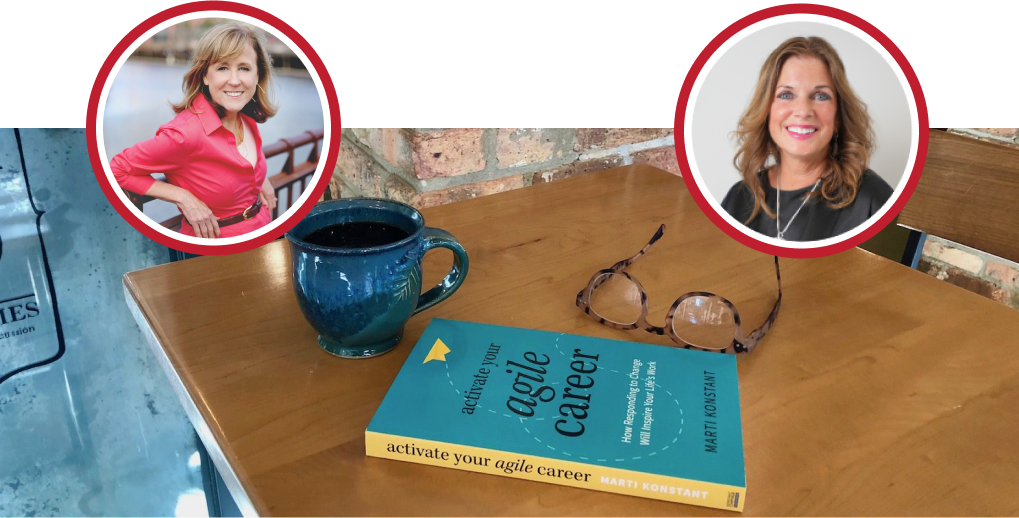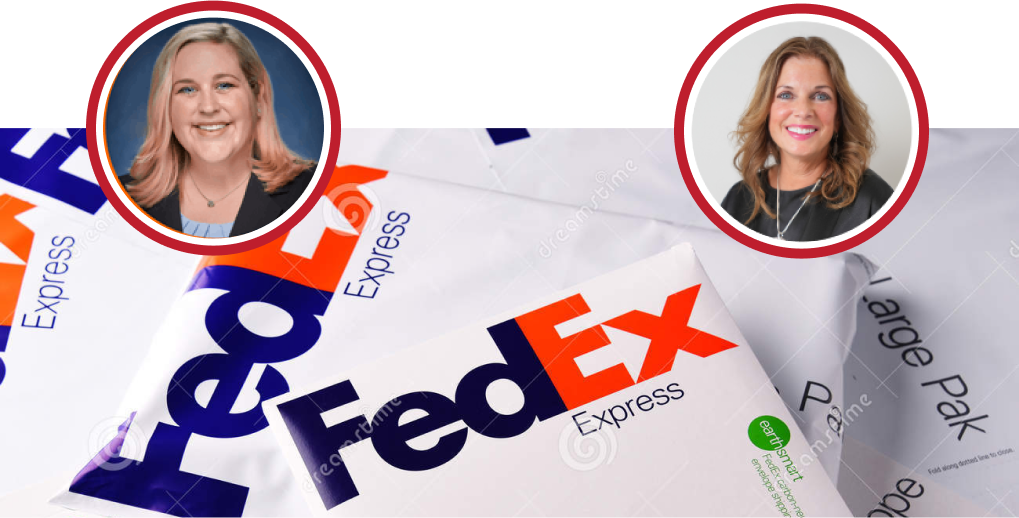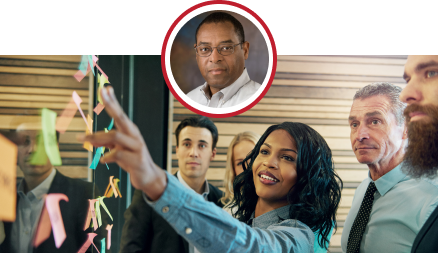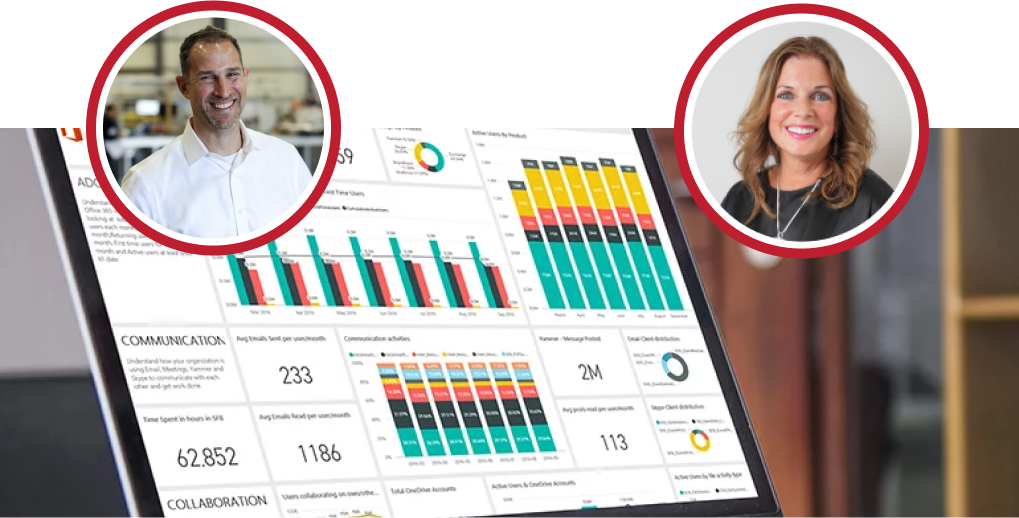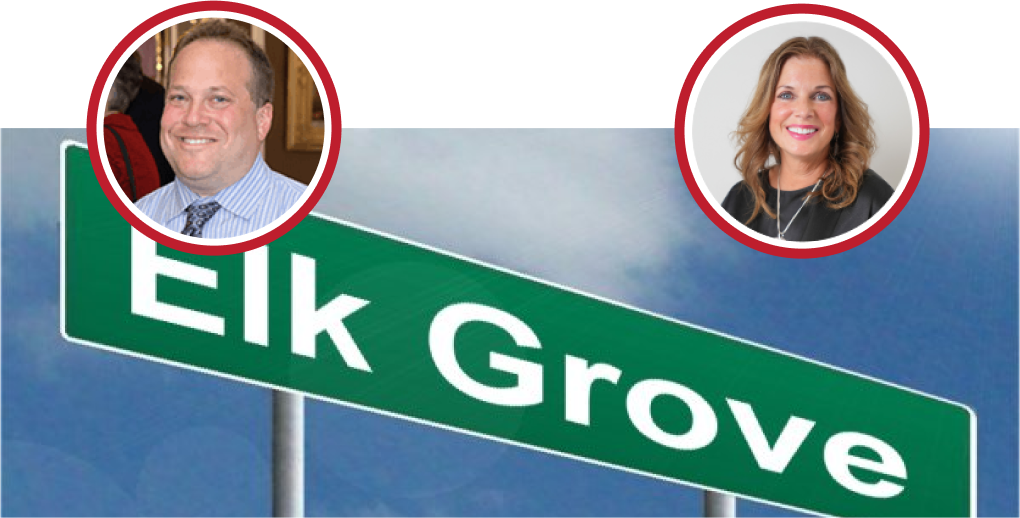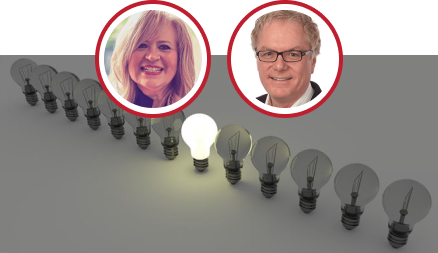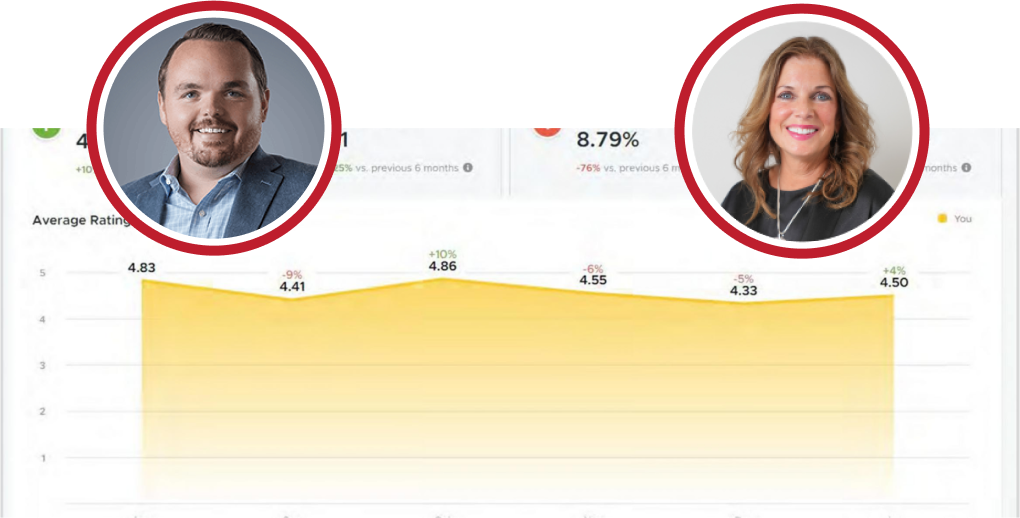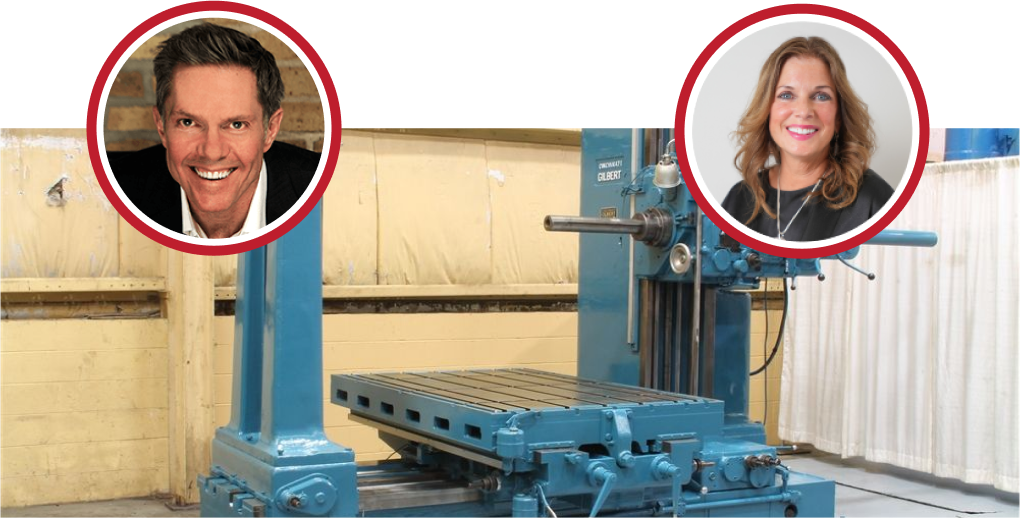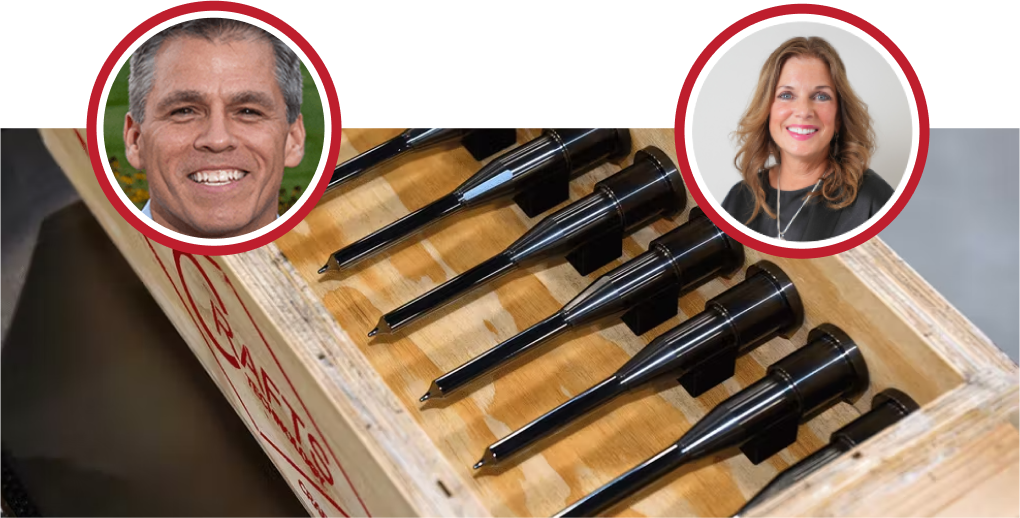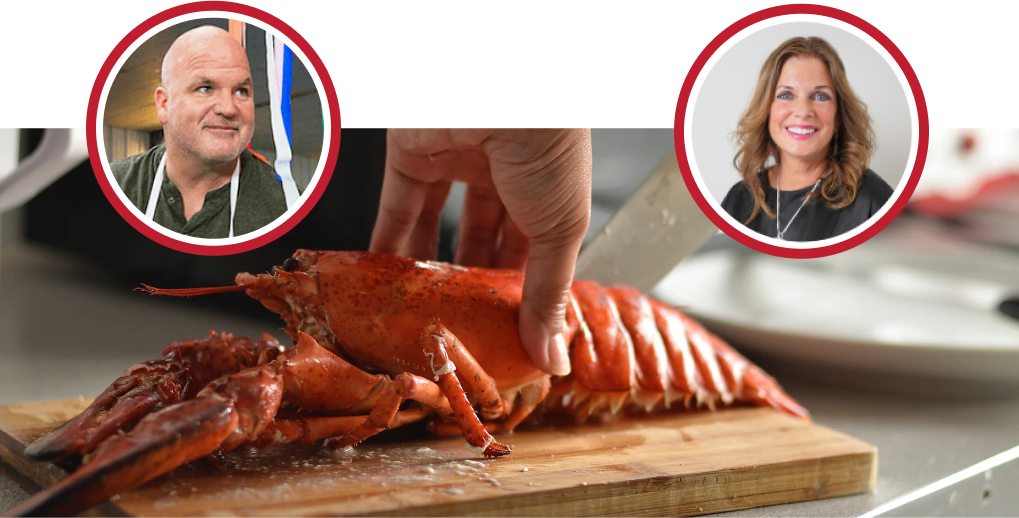Lisa: Well, welcome to today’s webinar, “Business As Unusual,” where we’re speaking with badass industry leaders about how they’re surviving and thriving in today’s economic climate. My name is Lisa Behning, I’m one of Red Caffeine’s account managers, and I’ll be the moderator for today’s session. I’m very excited to have our two presenters join us Kathy Steele, principal and owner of Red Caffeine, as well as Mary Lynn Fayoumi, who’s the president and CEO of HR source. Today’s session is going to focus all on preparing for 2021, whether you are still blocking and tackling some of today’s tough issues or if you’re looking ahead to seeing how you can reimagine your workspace as we move into next year, whether it’s prepping the next 30 days or really thinking through that 12-month calendar plan Kathy and Mary Lynn will dive through lots of great questions, but throughout today’s webinar we are taking questions to live, so please use the QA option or the chat function. I’ll be watching those, and I’ll be teeing up questions as we go through today’s conversation. As a note, everyone is muted, but you can also raise your hand if you do have a question for me again. I’ll be watching those as well; as I mentioned before, our first five registrants today did win a 20 Grubhub gift card to help support the restaurant of their choice, knowing our restaurant industry has been so hard and continues to be hard hit during this pandemic, it’s one small thing that we wanted to do to help out so congratulations to those five winners whom I contacted yesterday with that we’ll go ahead and get started, so Kathy and Mary Lynn, welcome to the floor.
Kathy: Thanks to Lisa. I am really excited to have Mary Lynn on today. As people know, our mission at Red Caffeine is to help build badass brands that people want to work with and for, and so Mary is in that unique position to help businesses, improve the way people feel about their employee experience, and so I’m thrilled to have her on she’s got, she’ll tell you a little bit about HR source, but she’s got this also a unique vantage point by being sort of a part of over 1200 different businesses and in her, in her community, so Mary Lynn could you tell us a little bit about HR source, and just how you sit sort of as a consultant and, part of other people’s organizations.
Mary: Sure, Kathy, thanks to both of you for having me today. It’s great to work with Red Caffeine, and I am very excited about our conversation, so HR source serves employers; we’re an association, and we deliver all sorts of support to our member organizations, and as you mentioned, we have the right around 1200 organizations in all different industries while our roots were in manufacturing we’ve now got a very diverse set of members that range from libraries to park districts to banks to social service agencies, credit unions, non-profits retailers, so a really diverse group of employers, but all employers have challenges and issues related to their employees and with the plethora of employment laws, issues related to talent and recruitment and engagement and compensation training we are there to partner with our organizations to help them perform more successfully stay out of legal hot water and to be better employers.
Kathy: Yeah, it’s incredible. I think the last time we saw each other was earlier this year, and the world looks so different; the last time we were at the executive breakfast club, and it was just like a fantastic event earlier, in 2020, so it’s been about six months, and we’ve been all facing these really unprecedented challenges in our business, and we’re kind of, queuing up for next year so what would we want to really dig right in what would we do to help start to move forward for those of us that what is the kind of strategy you guys are recommending for your business leaders.
Mary: Well, it’s been such an interesting year, I remember that day well, too I think it was a freezing cold winter morning, when we met and, again who would have ever imagined what 2020 has turned out to be like, and I think in those initial stages and maybe even early through in the summer it still felt like kind of a short period or a sprint, and now it’s clear that we’re more in marathon mode and so Lisa used a term that I have used frequently during the pandemic which is blocking and tackling so much of what we’ve been doing is just trying to get through the next day the next week the next new law the next news briefing the next and so it’s been really hard to take a longer vision and really wrap our heads around 2021 isn’t that far away right the holidays aren’t that far away I know when the weather changed a few days ago it was like ouch that was a shock to the system fall is really upon us this weird summer that we just had that had beautiful weather, but usually fall right after Labor Day is kind of back to school a time of renewal the leaves falling off the trees school starting it always feels like a real energizing time, and I’m afraid that a lot of people due to the circumstances are still kind of a stuck in oh my gosh what are we going to do from here mode so what I’ve been really trying to recommend to employers is certainly you can’t ignore the day-to-day challenges that are happening, and we can go into depth on some of those, and I can share what we’re hearing but also start to think beyond this current mode and envision what your future might look like in terms of new products and services what your staffing may need to look like now and into the future in terms of talent are you staffed appropriately for what business conditions will be like are you ready to pivot again right have you learned to be more nimble is that has that been hardwired into your culture so to speak now to be more experimental and take risks and to make decisions and even if they’re poor ones learn from them or are you still kind of in this place where you’re hoping that this is all a bad dream and the future is going to look a lot like 2019 look like right, so I think it’s really important that we take time away from blocking and tackling to read think reflect network right learn from others if nothing else lean on others to share our sorrows and our woes but also to find inspiration we were both talking about conferences and speakers and things that inspire us right looking also outside of our own organizations for bright spots stories and ideas for how we might approach the future with eyes wide open but also with optimism as opposed to , kind of, what we’re hearing in the news every day which can lead you in a kind of into a dark place , and it’s hard to plan from a dark place.
Kathy: Yeah, I definitely have had to turn off the daily news to just sort of keep from getting dragged into some of those toxic conversations as well as I agree, like what have we done quickly but what haven’t we not moved on that we were trying to focus on this year with that we had to move out of the way to focus on more pressing issues we definitely as organizations I think went into a 30-day mode for the first few months, and now it is as we’re gearing up for 2021 I think it is mission critical to think beyond , and what we haven’t moved on and I could not agree with you more much why we started this actual webinar series was to pick the brains and share experiences with other thought leaders in the space, so we didn’t have to learn the hard way we had access to great thinking from our network, so I agree with everything so let’s talk about some little bit more specifics that we’ve all been faced with so what are some of the things that you’ve seen I guess kind of starting with workforce we’re in that back to school mode with a lot of people having really different experiences depending on where they live so talk a little bit about what you’re seeing with some of those unique situations our workforce is experiencing right now.
Mary: Yeah, so it has been a really interesting dichotomy of or maybe a dichotomy might not be the right word maybe continuum would be a better word of everything from organizations who really have continued almost business as usual throughout the pandemic either because they’ve had a great demand for their services, healthcare providers retailers and then organizations that kind of had to take a time out because of the stay at home or shelter in place orders across the nation, and we can speak more specifically to Illinois and then those organizations that stayed business as usual in terms of their products and services but move their workforce out of a traditional setting and so I think there has been a hope all along that all of a sudden there would be we were using terms for a long time like reboot restart and we got some feedback early on that said hey we never stopped like what are you talking about or we’ve been working the whole time, so a shout-out to all the heroes the essential workers right who have worked harder they didn’t get a break they didn’t take a break if anything they worked much more difficult challenging jobs than they ever did before, but then there are organizations that are trying to figure out not only for example do they have the financial backing to continue their operations with their current team right we’ve heard all about unemployment it spiked way up from being at a historical low of around three percent where it was almost impossible to get talent to up in the double digits last time I checked it’s hovering right around nine percent a little less, but there are a lot of questions about whether or not that number really is indicative of what’s happening because so many employees are either having to take leaves of absence to help with their kids home schooling, or they’ve gone back to work part-time or even being currently furloughed some organizations are still kind of living off their PPP funds, and so they’re able to keep their current staff but long term they might not be able to afford it so there are organizations kind of all along the continuum who are all facing many challenges with regard to how to have their employees stay safe and healthy but how to run their business effectively and serve their customers clients patrons whoever that is in today’s environment which might look very different than how they were successful in the past.
Lisa: I actually have a great question on that, Mary Lynn, that came in from our audience, and I knew you’re going to go in that direction, so hard-hitting one, but do you have any guidance that you could give to people about bringing someone back into the office is it reasonable for an employer to ask a staff member to accept the risk of coveting exposure by coming back to the office so what are, maybe specifically for Illinois because I know you said there are some nuances there but what advice would you give to the mike and the rest of our attendees today.
Mary: Great question. So, we’re in phase four still in Illinois, which we unless the phases are changed at some point we will be in until there’s a vaccine and under that those guidelines which are poured out by the department of economic and community affairs office here in Illinois it recommends that employers if possible continue to have their employees work remotely so that only applies to a subset of the workforce which is one of the challenges is that there is a subset of the workforce who work at home is a real possibility and has worked amazingly well there’s another subset of the workforce whose jobs cannot be done from home and then there is a group of employees who could work from home based on their job but are not effective productive efficient happy motivated etc. working from home, so the easy out is to say to if there’s a lot of gray area here I am seeing every variation on a theme many organizations are saying our office is now open it’s safe it is we’ve taken all the necessary precautions we have plex the glass up we have stickers on the floor for distancing we have masks for you, we have touchless hand sanitizers we have one directional hallways you are safe if you come here to work and if you want to work our office is ready for you to come back or our facility depending on what type of environment you have other organizations are saying our office has not been made ready. We want all of you to stay at home we don’t want you to come back and yet others are saying we’re going to come up with some sort of schedule A, B, C, D groups, so some have certain employees coming in on certain days of the week so that everybody is with the same team should there be a positive case in their workforce so that who your exposure was to within that work group so if you decide I’ll take it one step further if you decide that you want to call people back that’s going to be the trigger to more requests for exceptions right so that is the point at which we are our hotline is ringing off the hook with organizations saying I have kids at home that need help with their e-learning I’m immunocompromised myself I’m over age 65, and I’m worried about being exposed to younger workers who aren’t taking the precautions I am I’m worried because we work in a multi-tenant building and I have no faith that the people we share the restrooms with are being as safe as we are I’m being just as productive from home why do you need me to come back, and I could go on and on and on and on with all of the things you’re going to hear from employees once you make that we want you all back so be ready for that it is your prerogative as an employer to make that request, but I would be more prepared than ever to have your rationale because the labor market is opening up and employers are recruiting again and if you’re giving some of your best talent a hard no, and you don’t have a good reason that you need them back in the office in their old traditional way you could risk either first of all a lack of engagement a drop in morale but worse, yet they could find a job elsewhere where they can work remotely all the time.
Kathy: That’s such a thank you, that was incredibly helpful. I mean, I think we’ve had even so many of the same questions; the one follow-on question I would ask is, what about having clients in your office? I know that’s come up a lot as well, and so what is? Where are we at with that question?
Mary: Again, showing empathy and flexibility is really important, so yesterday I had a call with a prospect a potential new member and he said I would love to come out and see your office and I said let me know when you would like to come out, and I’ll, I’ll make myself available and meet you there we’re doing that more often now but again based on the member or the client’s request we are also going out and doing on-site training again because members are asking us to, but before we go out on site we ask a number of questions about their safety protocols, we let them know our trainers will have masks or face shields on that we will be, abiding by the six-foot social dispensing rules and if they are not prepared to also be in compliance with those guidelines we would rather do our training via Zoom or some other remote platform so are you making are people taking temperatures when they enter the facility is that you’re going through almost necessarily we do we have there not monitors at both doors, and so we’ve done when we do public programming we take the temperature checks, and we have a health questionnaire that people self-evaluate and let us know whether or not they have any of the symptoms I don’t know if either of you have well, I know Lisa you’ve been to a doctor but if any of you have been to a clinic lately for any reason or even a dentist appointment you’ve probably had your temperature taken and filled out the questionnaire or been verbally asked the questions most workplaces again if I was going to have a client in and be careful and abide by the guidelines. I would take those precautions, and I think that’s the right thing to do. I know not every employer has the staff or the equipment, or many don’t even know that you need to be doing all these things because they haven’t had employees or clients in their offices for many months, so we’re trying to make sure I’m fortunate to sit on the national safety council’s safer task force and just a little plug they have a plethora of amazing resources for free not just for their members but for all employers so national safety council safer they have some free training they have all sorts of great information our website hrsource.org also has tons of information that can help employers be in compliance follow the guidelines and make sure that employees and visitors are safe.
Kathy: Yeah, I know so many of our clients are telling us you guys have been so invaluable in their preparation for return to work or creating a safe environment, so we’ll definitely include links in some of the follow-up communications to both your site and to the safer side, and I see that we do have another question coming from somebody that I know did a lot of due diligence on getting his workplace safe for the return to work for his employees, so he’s asking about this is Phil’s Sponsor asking about companies making their HR decisions based on their cultures and values if you had any examples of cases like that.
Mary: Oh, that’s a great question and such an important topic so throughout the pandemic I think it’s been really critical to make sure that you find ways to keep your culture intact, and I’ve seen employers improve their cultures during this period through more open communications more regular communications more authentic communications more empathy, and I’ll call it grace for employees than I’ve ever witnessed before, and so I think in each and every decision you make tying it back to your culture and values can only accrue to the good so figuring out again in revising your policies if you can make them more employee friendly but to back to my example before if you have to say no to an employee request explain the no right give their make a room for a conversation make room for explaining and exploring options I have seen so much more flexibility and willingness to accept a new, I’ll call it a pilot idea during this period rigid policies have been kind of thrown out the door because this is an environment that none of us have lived through before, and we are learning as we go, and so I’ve watched leaders be more humble and open to admitting they don’t know all the answers and also saying we may need to re-evaluate what our former policies are or were because they’re probably not going to work today or going forward, so I’ve seen so many employers who would have said before work at home would never work for us part-time employees are you kidding me realize that they want to retain their talent and also be flexible for example if people are busy with their kids during the day, and they don’t have a job that requires certain work hours if they’re willing to work the evening or night shift or do a split shift make it work right let’s figure out ways to be open and if and if they are not productive or efficient or pulling their weight then have a real candid discussion about that, so I think employers have a real opportunity to have their culture shine during this period and moving forward in ways that they never really had to think about before there’s a lot of room for improvement and I think I’ve been so impressed with how employers have risen to the occasion.
Kathy: Well, I think too, with so many things we’re saying technology’s been accelerated like digital transformation I do think that many of these things from a working port first standpoint were coming, they, we kept seeing them on trends reports about flexible work working from home working remote was always a top desire for candidates and current employees, so I this is just accelerated on both being able to be a lot more flexible as an employer, and figuring it out figuring some of these key things that really makes a candidate or a current employee in a different work environment if we all miss people a lot I think, and it’s been a unique situation just to try and balance out the things that the business needs and the things that the culture needs so great question Phil, I appreciate it so much I do want to ask one more I think we could stay on this topic the whole time I do want to ask one more question though what about legal culpability? So, if you were to bring somebody into your office, whether it’s an employee or a client, what are we spacing from a legal standpoint, or do we even know what we’re facing if somebody were to get it.
Mary: Yeah, that’s been a tricky one, so there have been some issues with Illinois workers comp, or initially they said all covered cases would be covered and then quickly some lawsuits were filed, so I while I have attorneys who work for me, for on our team that are amazing this is a really tricky area I don’t think currently there’s I think there’s going to be legal battles in the future, and it’s yet unclear how they will be settled again I think we always used to use the term and I think it’s applicable here affirmative defense. So, by showing that you responsibly followed the legal guidelines followed the state guidelines that you were prepared and that you were proactive could only help your case right so if you’re frivolous careless and are not enforcing social distancing mask wearing handwashing spacing within your office you’re hosting large group gatherings all of those things are going to hurt your case so my recommendation because the law is yet unclear and still untested because this is also new would be if you are open to the public having employees work in your facility having clients in protect yourself by following the guidelines the safety protocols to a tee have posters hung up signage correct clear out half the tables in your training rooms and in your lunchrooms take away all the common food and coffee for example when we just did a program recently we brought in boxed breakfast and boxed lunches we only had one person serving the coffee as if we were in a coffee shop each person came up so only one person was touching the equipment so just really thinking through every detail so that you can be as safe and careful one person in the copy room at a time no more shared beverage stations no more shared a supply cabinet one of our members who I just love this when he brought people back to work a couple of months ago he packed cute little mini backpacks for every employee kind of like a back to school backpack with pens and papers and a face mask and a water bottle and a coffee cup and all things so that and everything had people’s names on it, so every employee had their little first day of work backpack with all of their individual supplies so that they wouldn’t be touching each other’s stuff which I thought was a great creative idea and fun to and employee friendly.
Kathy: Yeah, I mean, I think that’s another; taking that extra measure to feel like a return to work is special. I think that’s a great tip as well, so let’s talk about some of the things that have happened on the digital front we’ve all many of our businesses, whether we’re working entirely remote or we’ve got it more of a bifurcated work situation where there are some essential employees that need to be the office I think about manufacturing a lot is because that’s a lot of our client base what have seen how are people responding to setting people up appropriately for with technology, and then I’d love to sort of ask like at the follow-on to how are people managing how are you setting up for performance reviews and things that you’ve done traditionally face-to-face in a more remote and even hiring you to know.
Mary: So, I’ll start with the first one. I think there was a mad scramble about six months ago, and I think a lot of organizations realized they were not prepared to have their employees all working from home. Their technology was not up-to-date. Not everybody had laptops, and that was a challenge. Many organizations spent those early weeks just literally scrambling and running around trying to find equipment get people set up, figure out how to get people logged in to try to get people to show their faces on Zoom meetings or teams meetings, so I think for most employers most especially if they’ve been open the entire time that is behind them however now I’m starting to hear if organizations are keeping people at home long term people are starting to complain and struggle with ergonomic challenges their chairs being uncomfortable their computers not being at the right height for Zoom meetings. I know we probably have all looked up someone’s nose or seen their ceiling fan or right I have a big pile of cookbooks right here that my computer is on when I do Zoom calls, but we’re hearing more challenges now and some employers have the budget if they’ve been able to relieve themselves of some of their real estate expenses they’ve been able to give employees stipends really to maybe upgrade their home offices a little many employers like my own we have, a rent bill due every month, and it’s not like we, so we’re not for profit association have a separate pool of money that we have a lot of money to put into outfitting everyone’s home offices but in some instances we have delivered their office chair or their big screens or their risers to their home if they didn’t have a way to come get it I’ve heard that from many organizations who’ve said come and get whatever you need from our office to make your own home office as conducive to work as you possibly can other organizations have said you can expense up to blank for those things whether it’s headsets microphones lighting whatever it’s going to take to help you be more effective so that’s for the most part I think in the rear-view mirror I think we’ve all heard about zoom crashing and Wi-Fi challenges right those things I think are going to continue for a while and have become no one’s offended anymore if a kid runs into a zoom camera or a dog barks in the background that’s part of life now it actually kind of makes it more fun and real.
Kathy: Definitely, say if Lisa’s dogs don’t bark during one of our webinars, that’s not we haven’t really had it successful.
Lisa: So far, so good, right now.
Mary: So, very quiet today, Lisa, they are very quiet.
Lisa: Quiet. I’m going to keep my fingers crossed.
Kathy: Did you have a question from somebody, Lisa, that you wanted to ask?
Lisa: We can swing in that direction because I think it really speaks Mary Lynn when you’re talking about helping your employees out, and there are some tech challenges but also kind of the culture and inclusion, so this could really round into multiple areas, but Rick had asked a little bit earlier what are you seeing companies do around inclusion that’s fundamentally changing their cultures it’s not just window dressing, so I think whether it’s hiring supporting staff whatever it is, so I think it’s a great time that we can shift into that area as well.
Mary: Yeah, that is really been an important issue that has always been here in our American workplace and our culture and a challenge that many organizations had not really faced head on, and so I have seen once again I have a lot of optimism based on the fact that I see organizations taking it so much more seriously one of the biggest things I’ve seen change is more open conversation right more really just listening sessions and not sweeping it under the rug anymore and looking at all the facets of diversity equity and inclusion that aren’t just about anti-harassment aren’t just about like you said window dressing or making sure that you say you’re an equal opportunity employer but what does the work experience look like at your organization who is successful in your organization what kind of microaggressions might be occurring what kind of unconscious bias and while I believe training is an important component it takes way more than a training session to ensure that your organization values diversity equity and inclusion, and so I’ve seen many employers and I will include HR source amongst them who have currently formed task forces committees working groups to try to figure out how to make meaningful strides as opposed to just slapping a quick training program together or writing a letter and posting it on your website but to continue the conversations continue the efforts to try to make them meaningful and lasting enduring and impactful and that is a different journey with different elements depending on where your organization started from depending on the culture of your organization the current makeup of your workforce your geographic area there are so many unique elements there is not one size fits all the common element is doing something taking it seriously making sure your leaders are involved and are not just giving it lip service and taking a good hard look in the mirror as a leader as an organization as a team as to how you can do better right I this phrase is used over and over these days but I think it really applies to this topic which is seen something say something right now if someone is talking in a way that is derogatory of others or inappropriate or hurtful in the past I think a lot of people because they didn’t want to make waves or hurt their own reputation wouldn’t say anything I think we’re in a period right now a group of association peers have been doing this program called text to table the text or text to table, and I tuned into one of the programs last night and I had it was so interesting to me, it was a group of just black women last night, and they said they were so not fans of the book lean in by Sheryl Sandberg which I thought that book was amazing, and I loved it and I referred to it over and over again, and they said they felt like it spoke to a uniquely white woman’s experience in the workplace not a person of color’s experience so just exposing yourself to more information and also as a leader exposing your own vulnerability and admitting that you have a lot to learn yourself and are willing to hard conversations is such an important part of your effort as opposed to just saying hey I got this I wrote the letter I posted to our website next time we have a chance to hire someone we’ll hire a minority we’re good it’s so much more than that and I think it’s not going to be a one and done it never was, but I think for many organizations it wasn’t the priority perhaps the night that they needed it to be , but hopefully at this point we’re all in a learning and growth mode that it’s only going to help our organizations prosper.
Kathy: Yeah, you said it so well, , I’ve been hearing another thing around inclusion is around being invited to the party and also being asked to dance, so there’s just there’s just so much there’s so many rooms and steps to go for most of our organizations there are lots of limitations, but there are a lot of learning opportunities out there, and I agree that we all just have to be more open , and just thinking about what we don’t know the other pieces is that there’s justice proof that having a diverse organization can have some really strong business benefits as well, so we always want to advocate for the win-win, and they’re making more culturally beneficial than having real diverse viewpoints and having people come from really different places to bring the best workforce work forth , so I do think it’s a great opportunity for all of our organizations so the other thing that always comes up in employment surveys or creating an incredible employee experience is going back to a question I tried I was started to ask earlier around managers and getting feedback and how to do those types of things the review processes when you’re not in the same room what are you seeing on that are people doing their annual reviews are they postponing is what’s happening.
Mary: Yeah, I’ll bring out that old continuum again I think organizations are all over the map so those that were already in an environment where they had remote workers I think their business as usual they’ve been giving feedback having listening sessions interacting with their teams regularly able to manage performance and productivity quite well I think many organizations are in a learning mode they’re trying to figure it out even figuring out the cadence of how much information is too much how much interaction is too much do I need daily check-ins do I need hourly check-ins do I need weekly check-ins how much metrics are necessary and what metrics are valuable and important I think we’re learning that it’s not a one-size-fits-all situation right some of our employees are just working incredibly well actually better than ever in a remote situation others are struggling right they aren’t sure how to prioritize their day they have too many distractions they’re lonely they have mental health challenges I mean the data out there on the amount of depression anxiety social isolation opioid abuse alcohol abuse weight gain it’s really sad and concerning, and so I think many employers are did not have a management team that was ready to manage or supervise employees who were not in their space on a regular basis , and so they probably need more support and training and how-to skills early on we offered, and I think we’re going to offer more a number of classes on not only being a remote employee but managing remote employees because I think there’s an art and a science to both, and they don’t necessarily come naturally I know we’ve all heard and seen lots of examples of someone who’s really good in a specific skill set getting promoted to management and being a flop, and so I would say a very similar analogy holds true some people who were really good at managing face to face aren’t necessarily yet armed with the skill sets to manage a remote workforce effectively, so some organizations have been really effective there are tons of technology tools out there I mean most payroll apps have a module you can use for performance management there’s lots of standalone performance management programs there’s been this ongoing discussion over the years about I think a book came out I don’t know even five or ten years ago now called kill the performance review or the performance review is dead, and managers and employees alike were like yeah I’m so excited, but little did they know that did not mean you don’t give people feedback anymore or don’t give or receive feedback it actually meant get rid of the form and the old stodgy once a year process and start communicating and documenting your feedback a lot more poorly or monthly, so I think a lot of organizations are still figuring it out right I would, there’s kind of people in all different camps some saying when we get back to normal we’ll go back to our old normal process others saying our old process was old to begin with we need a whole new process and others saying we have never communicated so often and been so in touch with our employees because we’re having regular huddles we’re sharing our metrics many businesses have been kind of touch and go and so the need to really be monitoring productivity and output and prospects and the pipeline has been even more fluid and active than ever, so I’ll go back to saying it depends on your business it depends on what your process was before it depends on how effective your managers have been and whether or not you have an old system that’s worth using, or you need to throw that out with 2019 and just start fresh and figure out something that fits your new environment.
Kathy: Yeah, makes, I make sense, I think we’ve done so many different things and even with employee satisfaction sort of pulse checks as well as just you just lose that sort of, or I guess we feel like we might have lost a little bit of our culture because we’re not in this physically in the same room, and we’ve sort of tried a lot of different things this year, and so I also think just pivoting when things are not when we were doing everyday stand-up meetings we didn’t need those everyday stand-up meetings they were trying starting to suck time out of the day that people wanted to work on actual projects so it just kind of trying some things and to your point there’s a lot of piloting going on right now so is there anything you’ve seen in the hiring I agree that there’s just been a little bit more escalation of , and it’s, it’s an, it was challenging pre the pandemic, and now it seems like it’s even more challenging because you’re there’s talent out there, but we’re still faced with our is the right talent how do you get right.
Mary: So, there is more movement, I would say there’s more fluidity in the marketplace more openness to hire and be hired obviously there are still a lot of concerns with how do I know for sure that I’m joining an organization that is solid right am I jumping if I’m currently employed and thinking about a new opportunity is the organization I’m going to financially solid have a bright future going to be an opportunity that’s going to be a good match for my career aspirations and then for both the employer and the employee many of these interviews are happening via zoom right and so how do you from both ends assess as a candidate that these are people I want to work with I might not even see where I’m going to work, or I might be going to work right where I’m sitting right now right I might not be going anywhere to work I might be sitting right here but how do I get to know my colleagues how do I really get onboarded and get to know the culture and get to know my colleagues, and figuring that out from both sides I think many organizations are in the process of reviewing their selection and recruitment processes and realizing that they need to reinvent them for this virtual environment they need to think about each step in the process and who they’re going to include right because if in the past you may be had, group interview with five people from the organization and one candidate does that work still effectively with zoom or would it be better or whatever platform you’re on or would it be better to have five short interviews with each person individually what if some of the candidates are willing to come in person, and you’re trying to conduct in-person interviews and others are saying I’m not comfortable is that a dealbreaker right is that a have or a nice to have what if you the employer are saying we don’t need to meet you in person and the candidates saying I want a tour of your facility right I want to meet some of these people in person before I make this decision all of those are challenges that are facing employers and are probably going to continue for the foreseeable future so thinking about it having a conversation about it and again piloting trying different approaches and seeing what works, and you might have a slightly different process for every position depending on the department the hiring manager right all sorts of issues could impact how you want to treat each position that you have open, and we’re going to be learning as we go and then once you get them hired how are you going to effectively onboard if your old environment isn’t your old environment right remember those early days on the job different people take you to lunch right you arrive at work, and you have maybe some treats on your desk or how are you going to replicate that so that your new employee feels welcome has a chance to acclimate and get to know the rest of the team and how do you measure their performance early on those are things you really need to pre-think and are going to be really interesting, and I think of course employers are going to get better and better at it and so are candidates right we all know candidates have become more savvy over the years and so I’ve heard people say how are we going to know if someone is effective if we’ve only seen them on Zoom well I mean it’s if you’re if you can communicate right I mean it’s we’re pretty natural in ourselves right you can learn a lot from someone in this virtual space but making sure that you’re making decisions based on job-related attributes as opposed to how good someone locks on zoom or how right nice their background is or whatever else we’re going to have to really make sure that we’re looking at that job description and that we’re back to our conversation about diversity equity and inclusion making sure that we’re making the right decisions that are job related and defensible and legally sound even if we’re not able to meet people in person like in our traditional fashion.
Kathy: Well, it also gives us an opportunity to think differently. I don’t think I was really keen on it. I was definitely keen on having more flexible employment arrangements pre-covered, but now I’m even thinking about if there’s the right talent outside of Illinois. This is my opportunity to really be able to capture a different approach to the workforce entirely, so I think it’s also escalated some of the things that were we’re kind of brewing free because it’s just giving us more access to people and ways to work together, so I know we’re getting short on time I want to be able to give a few minutes for any additional QA from our guests Lisa do we have any other questions that have come up.
Lisa: I haven’t seen any other questions, but I know Marilyn. I did want to hear more about when you mentioned the kind of your skills and some of the courses. I know you guys have some exciting offerings, so while we wait for a few more questions to come in, would you mind telling us a little more about what you at HR source have upcoming that might be of interest to our attendees today.
Mary: Sure, thanks Lisa, so speaking of pivoting we have turned almost all of our training almost all virtual and so coming up on September 24th and 25th we have combined our annual HR and employment law conferences into a day and a half conference because our original HR conference was on March 19th the week that governor Pritzker started to shut down our state, and so we were not able to have our in-person conference because it had over 250 people coming, and so we’re really excited to offer wonderful programming we have keynote speakers speaking on topics from the res resilience of the workplace to diversity and inclusion leadership lessons employment law compensation, and we will have live q a for all of the key voters it’s special this year we have a buy one, get one we have never had an offer like that so for every paid participant you can bring someone else from your team because we think it’s more important than ever to have people join together and debrief after the conference about takeaways and how they can apply them in their organization, so we’re hoping that we will have a combo of HR and CEOs or plant managers deputy executive directors I mean all different combos of employees who come together attend the sessions and from the comfort of their home or their office, and one thing that we really pride ourselves on is having speakers that are not only dynamic and interesting but also to make sure our attendees leave not just inspired but with tactical realistic takeaways so not only aha moments but oh my gosh I need to go back to the office and check to see if our policy includes this is a great resource I need to check into that so a lot of the speakers come from our own staff which I’m very proud of we have just such amazing brilliant speakers and talent on our team but then also some a wonderful outside presenters as well.
Kathy: Absolutely. I’ve attended a number of your events, and they’re excellent, and just so everybody’s clear, it’s not just the conference there’s, there’s an event that you can attend as a member or a non-member, so definitely we’ll be sending out a link to the website after so people can check out some of the things that you guys have going on anything Lisa do we have any final questions I know Mary Lynn has a busy afternoon.
Lisa: Yes, I would just say with that being said, we’ll switch over, and first off, thank you, Mary Lynn, for all of the great information you’ve shared with us today, whether you’re still dealing with the issues that are happening as you said, every situation has some unique facet to it your hotline is ringing off the hook to what you’re thinking about as people are moving into next year how are your performance reviews are you technologically set up to handle everything as we continue in this remote workforce, so thank you so much for all your information and advice today.
Mary: You’re so welcome, Lisa. I have always enjoyed working with Red Caffeine, and these topics are current and what are facing employers again. I’m super enthused and optimistic about how employers have handled all of these challenges and are facing the future with eyes wide open and are working very diligently to engage their employees to nurture their cultures, pivot when necessary, and just become even better than they were pre-pandemic.
Lisa: So, if you do have a question for Mary Lynn that you think of afterward, you can reach out to her on LinkedIn. We also have her contact information there; just make sure you reference “Business As Unusual” so she knows that you’re coming from the webinar; thank you again, Mary Lynn.
Mary: Thank you, Lisa, and thank you, Kathy; always great to work with you.
Lisa: So, as we look ahead to our next webinar, we’re looking at September 27th, so two weeks from today, we’ll be speaking with Kevin Mauger, President of NCC Automated Systems, and you may be thinking, I’m not sure who NCC is, but Kevin has an amazing story to tell he’s going to walk through some real-life examples when you start talking about some of today’s business systems whether it’s EOS the entrepreneurial operating system GGOB the great game of business or even looking at an employee stock ownership program in ESOP. Kevin has experience with all of these and has implemented all of them successfully at NCC, not only helping his employee’s well-being and happiness at work but also affecting financially positively their bottom line. So, join us; we’ll have registration live at the Red Caffeine website so redcaffeine.com; right on the homepage, you’ll find our “Business As Unusual” section; you can register there for those of you that may be interested in today’s session we will be sending out the recording of Mary Lynn’s later so feel free to watch for that’ll come sometime tomorrow, or you can also visit our Red Caffeine website again redcapping.com, and we’ll have recorded there as well if this was your first time hearing one of our “Business As Unusual” webinars we’re so glad that you tuned in today if you have any questions about Red Caffeine or perhaps how we can help your business feel free to reach out to us at connect redcaffeine.com thanks again Kathy and Mary Lynn and thank you to all of our attendees have a wonderful rest of your day.
